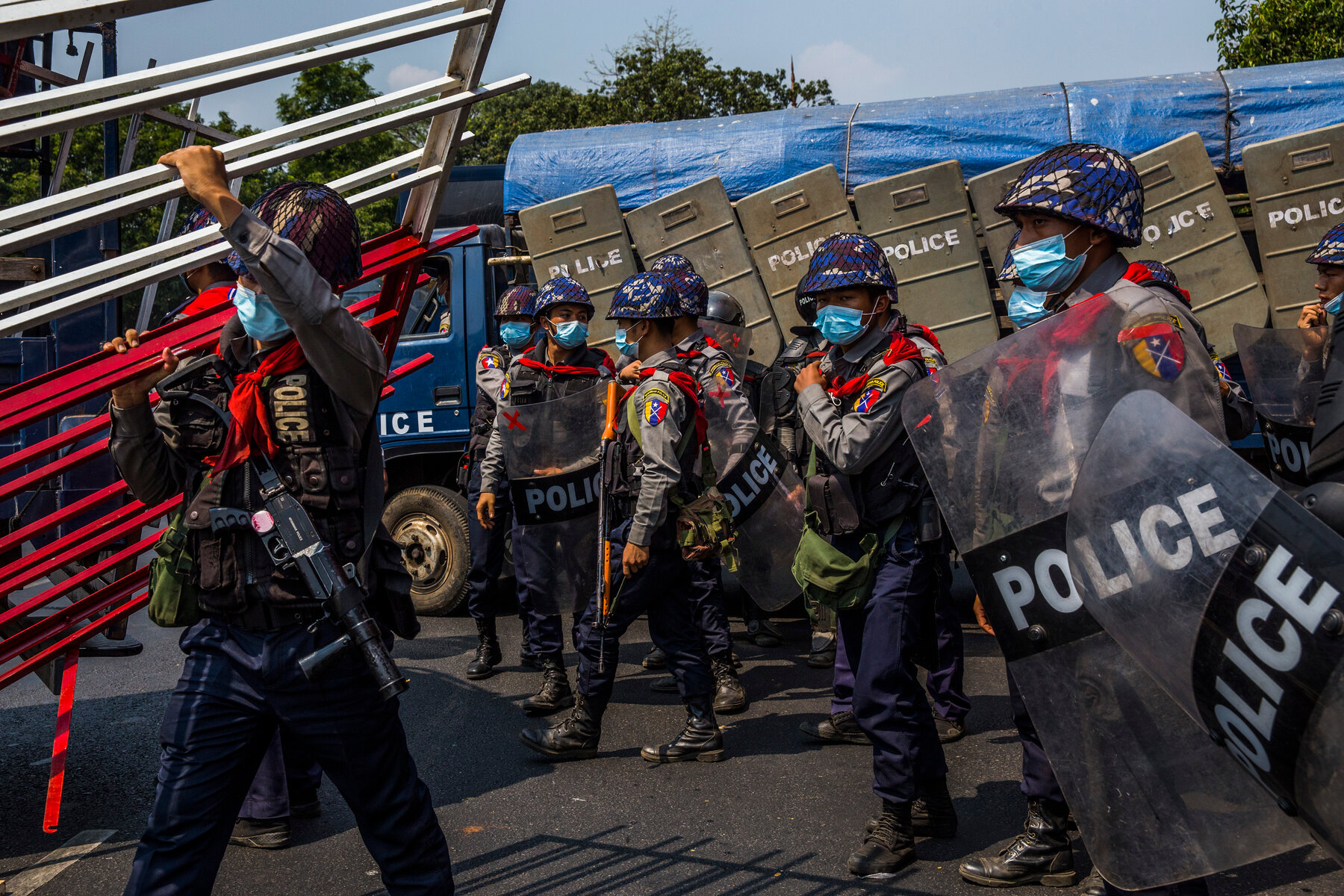On February 1st 2021 Myanmar's Armed Forces brought a decade-long experiment in limited democracy to a sudden and violent end. The country has been reeling from the consequences ever since.
A Panos photographer, whose name is being withheld to protect his identity, has been following the fateful events since the coup.
Police forces set up road blocks as protestors march to protest against the coup, Yangon, Myanmar. © Panos Pictures
Having served as de facto leader of the country since elections in 2011 and as head of the National League for Democracy (NLD), the party which campaigned for civilian government since the late 1980s, Aung San Suu Kyi was removed from her post and put under house arrest on February 1st and has since been awaiting sentencing on a number of flimsy charges.
Since the coup, huge demonstrations across the country have taken place, initially mostly peaceful but increasingly turning violent, with soldier confronting protesters and conducting house to house searches for alleged ringleaders.
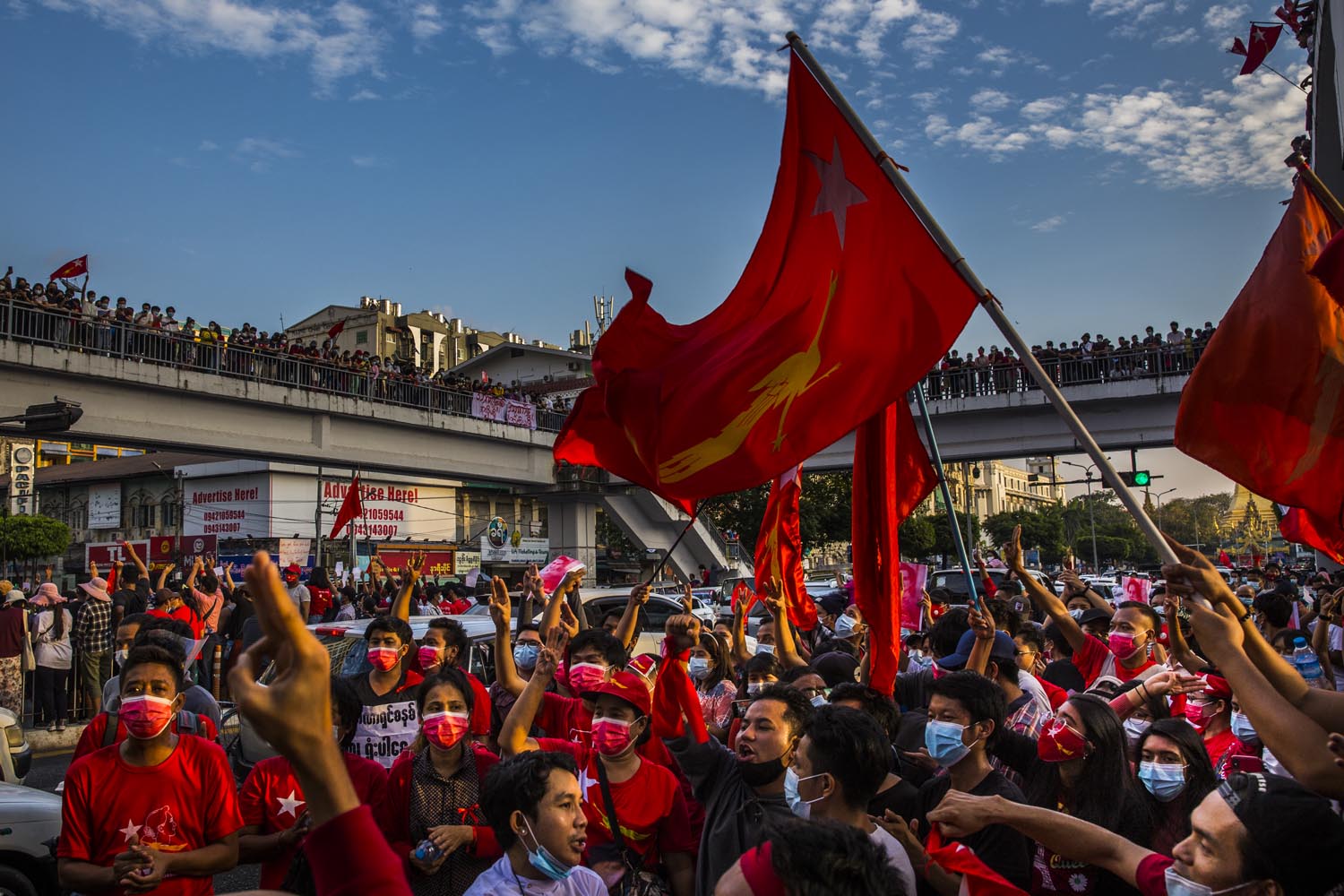
People watch as thousands protest in downtown Yangon to show their support for the NLD party and rejection the military dictatorship on 7 February 2021, Yangon, Myanmar. © Panos Pictures
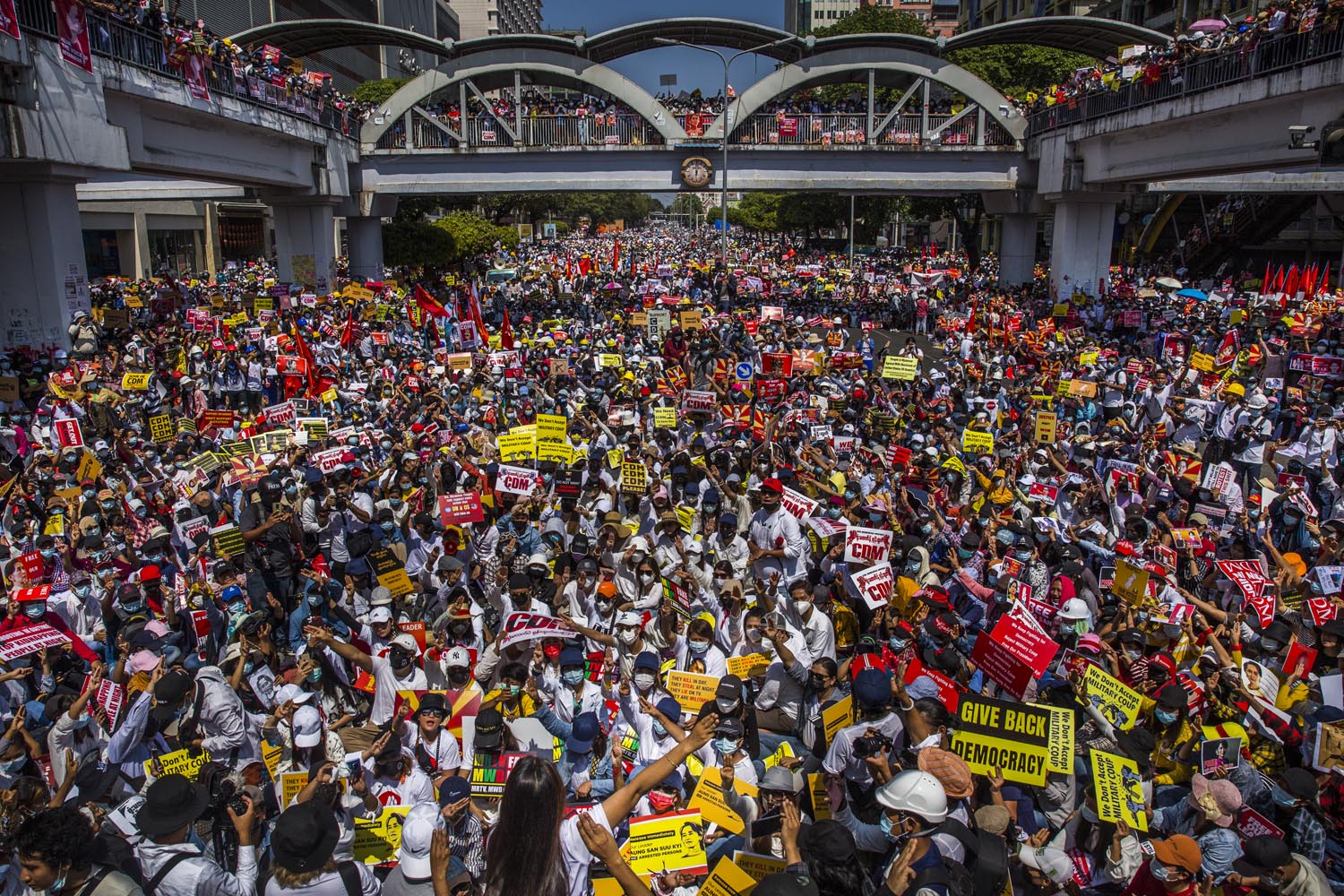
Hundreds of thousands of protestors including students, government civil servants, celebrities and political activists gather in the centre of Yangon near Sule Square, to show support for the Civil Disobedience Movement and to reject the coup, Yangon, Myanmar. 17 February 2021. © Panos Pictures
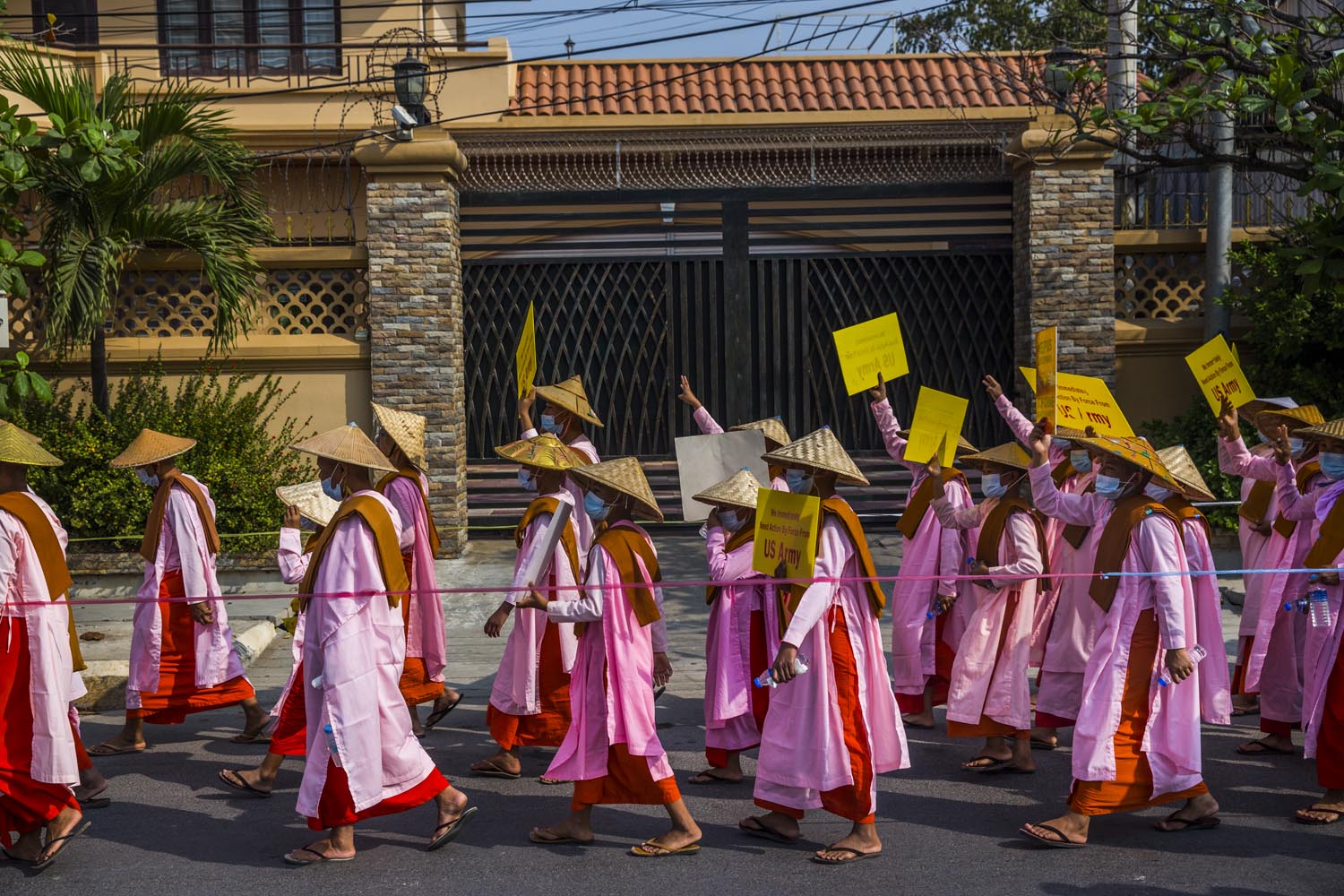
Buddhist nuns march to protest against the military coup in Mandalay, Myanmar. © Panos Pictures
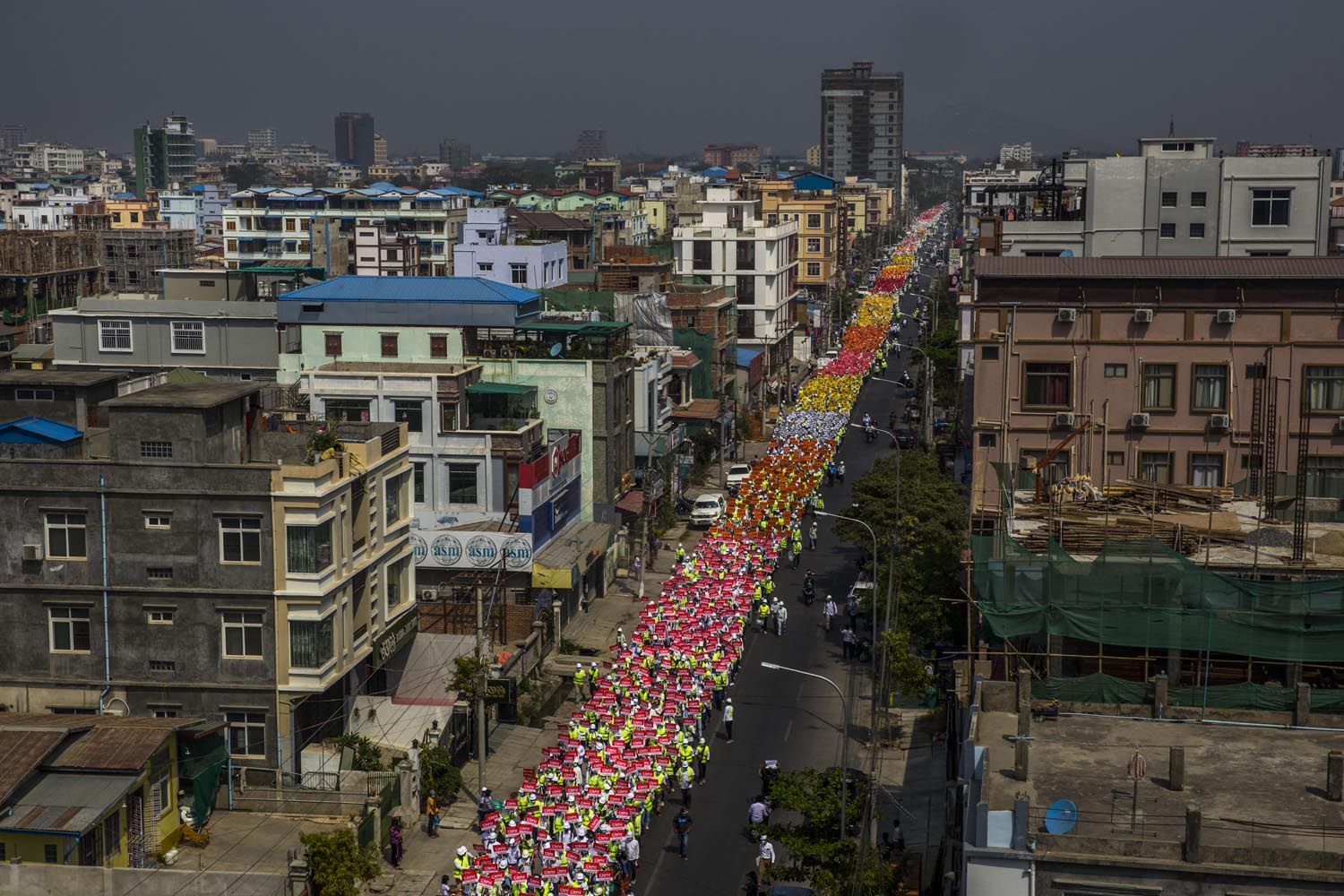
Medical students, doctors and engineers in their thousands protest against the military coup in Mandalay, Myanmar. 26 February 2021. © Panos Pictures
Almost a thousand protesters have been killed and thousands more imprisoned. Meanwhile, the army has come down hard on local media and non-governmental organisations, regularly shutting off the internet, arresting journalists and human rights campaigners and intimidating civilians who turn out to protest.
Young people with fewer memories of the decades of repression by the military have turned out in force to protest against the power grab and imposition of restrictions on their freedoms. With nothing but home-made weapons and improvised helmets they have faced off against the might of the national army.
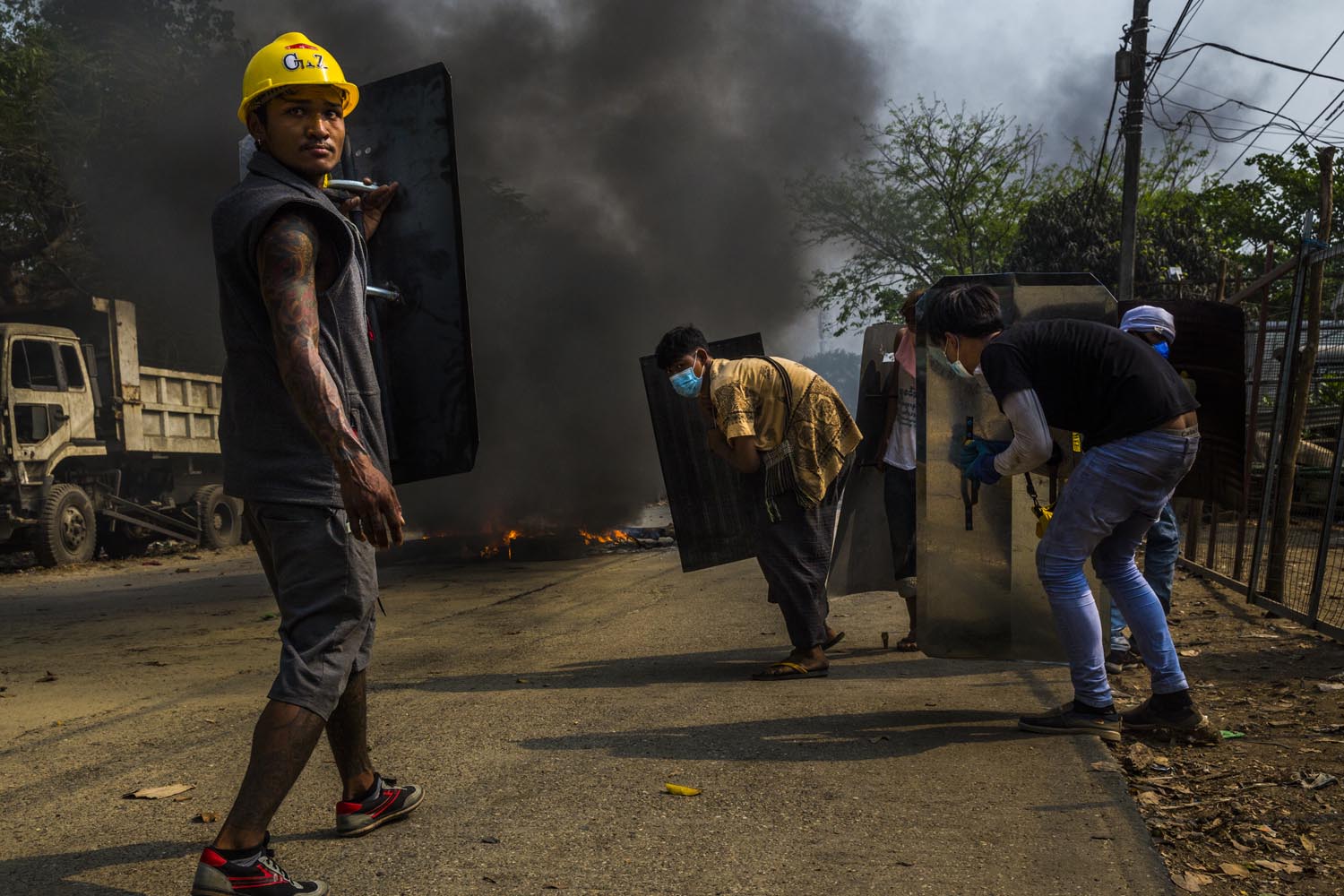
People try to prevent the security forces from entering their neighbourhood as military and police joint security forces crack down on a protest in Hlaingtharyar industrial zone, on the outskirts of Yangon, Myanmar. © Panos Pictures
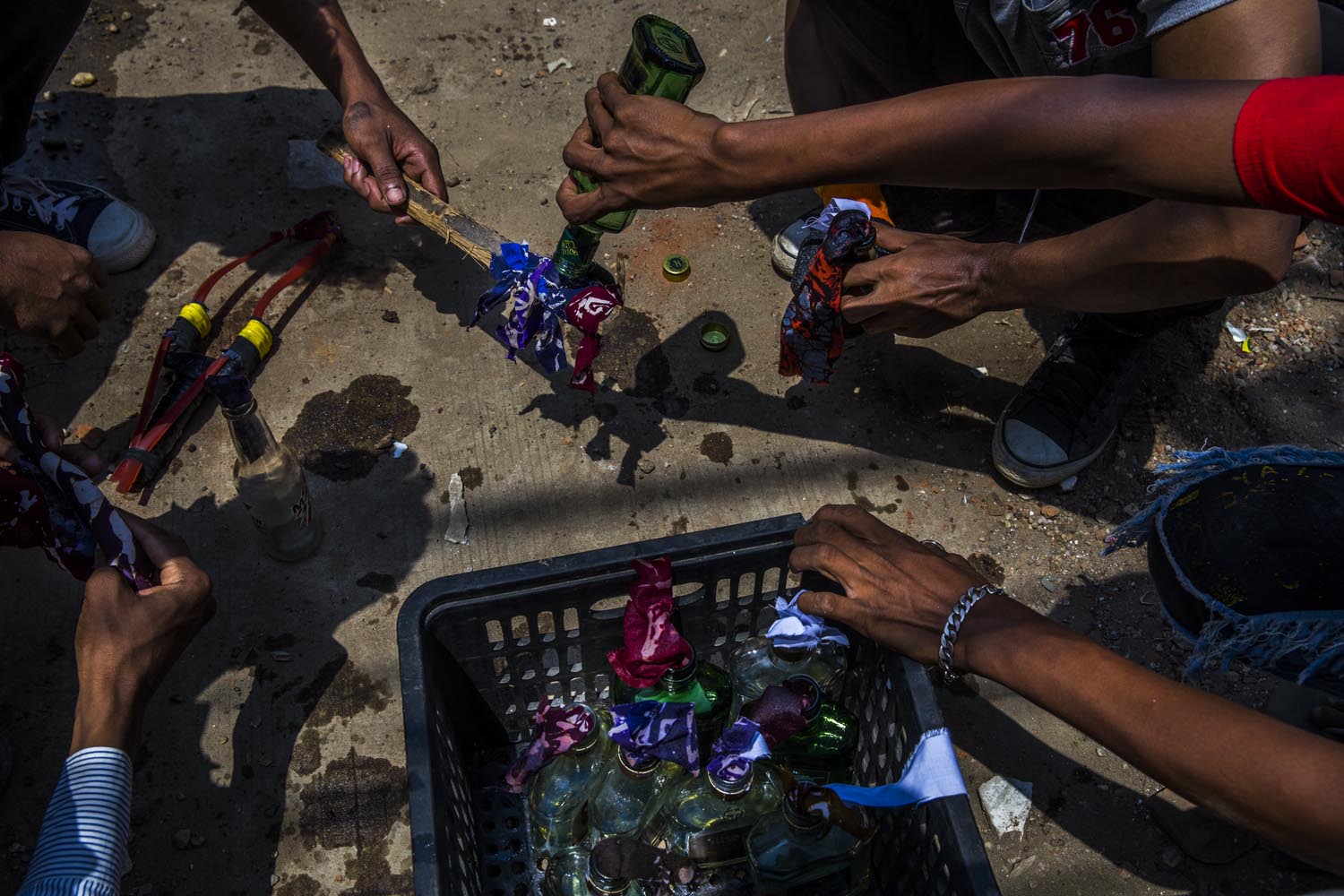
Protestors prepare molotov cocktails ahead of a crackdown by the security forces in the Tharketa township, Yangon, Myanmar. © Panos Pictures
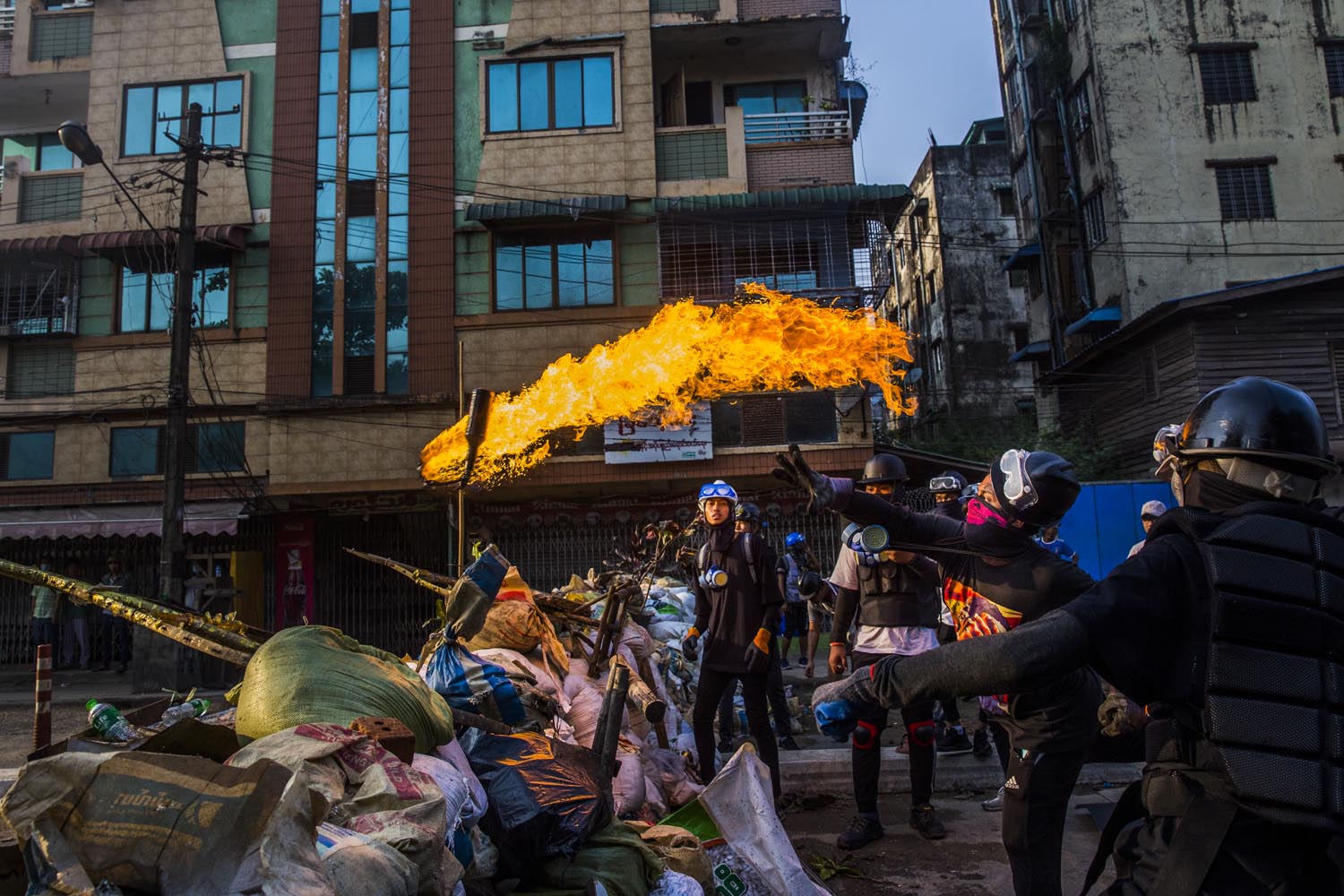
Protestors throw molotov cocktails to set the road on fire in an attempt to block the military and police joint security forces in Yangon, Myanmar. © Panos Pictures
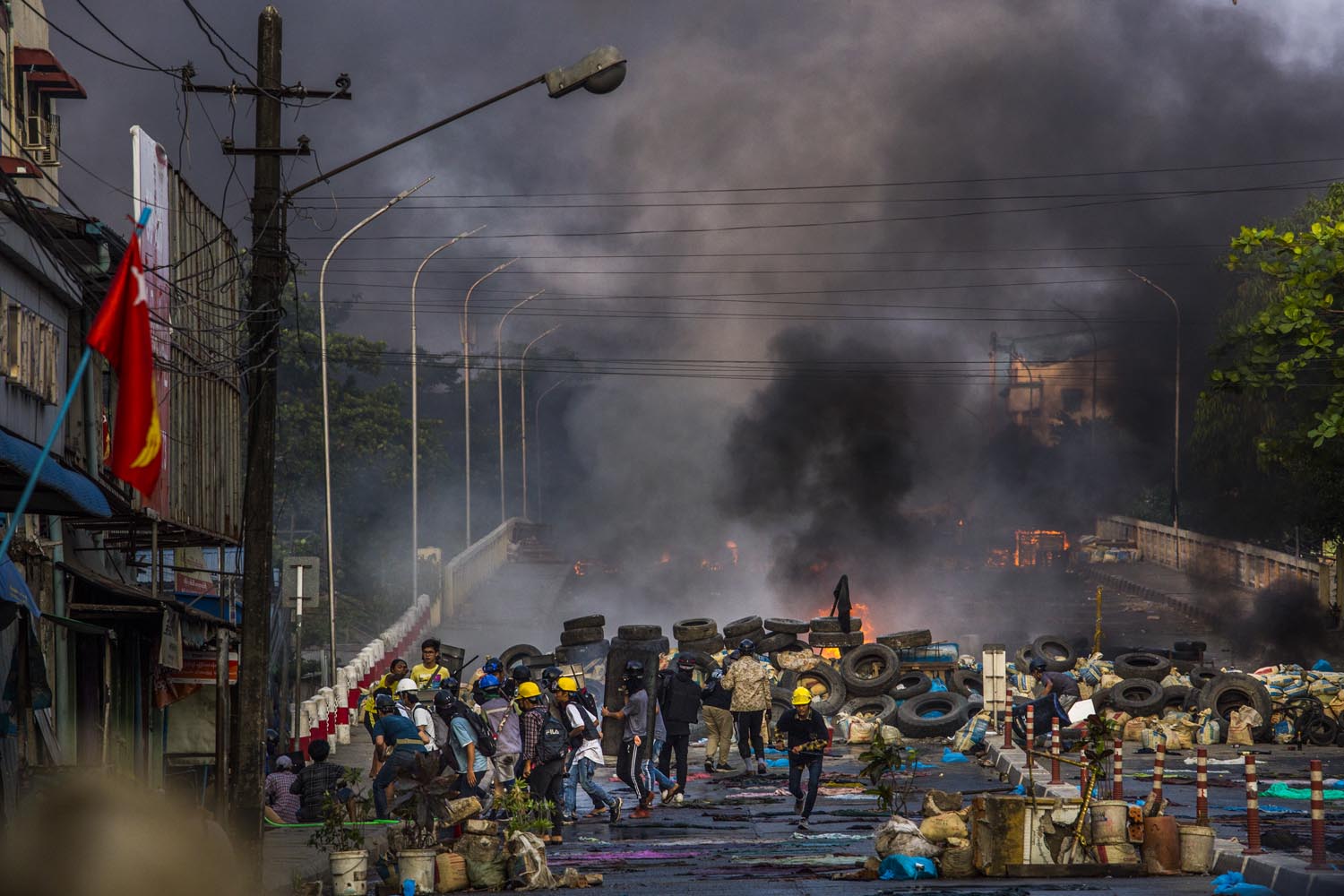
Protestors and local people defend their barricade as military and police joint security forces attempt to clear a road blocks in Bayintnaung junction across the river from Hlaingtharyar, Yangon, Myanmar. © Panos Pictures
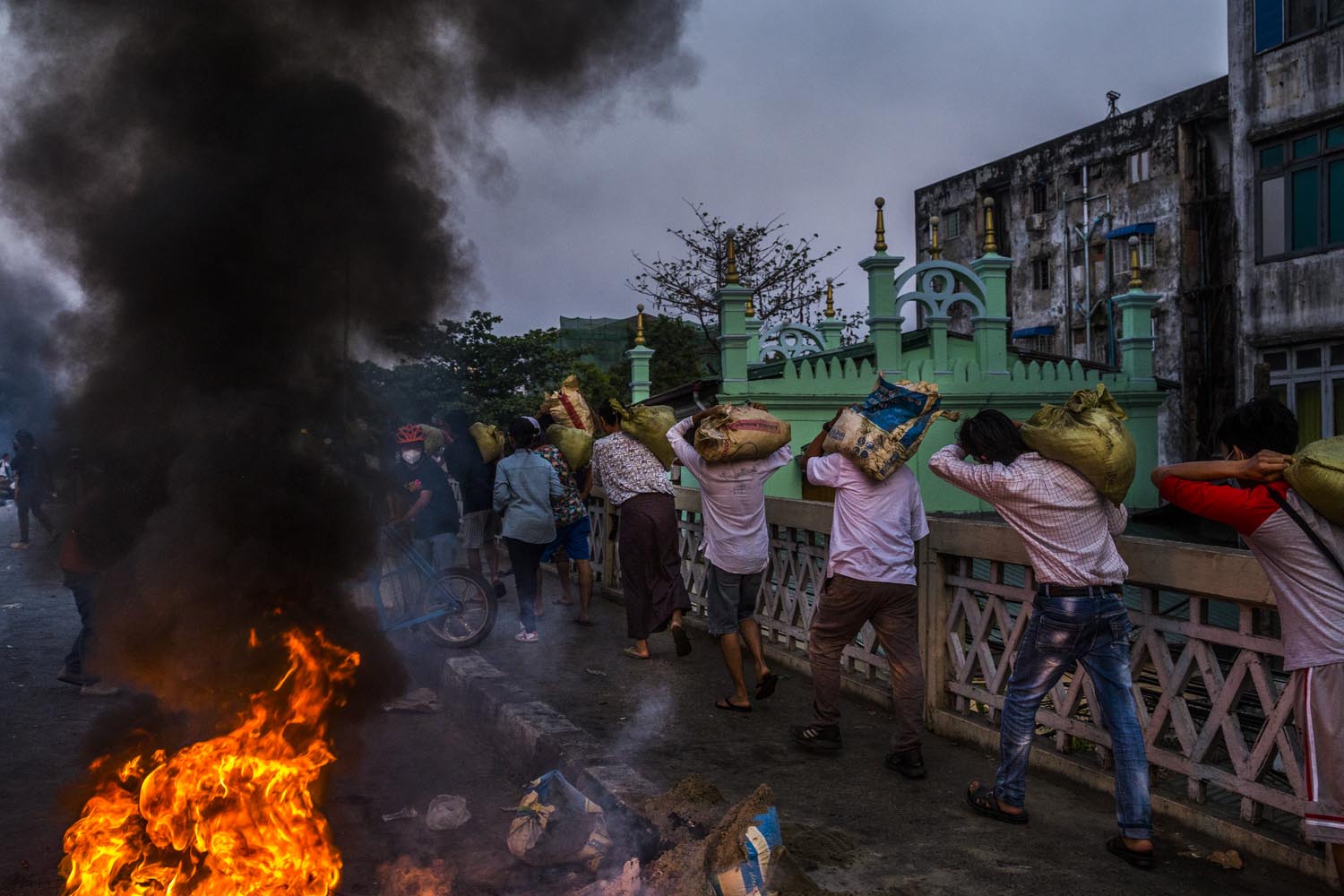
Protestors and local people rebuild their barricade after security forces cleared their road blocks with a backhoe on a bridge in Bayintnaung junction across the river from Hlaingtharyar, Yangon, Myanmar. © Panos Pictures
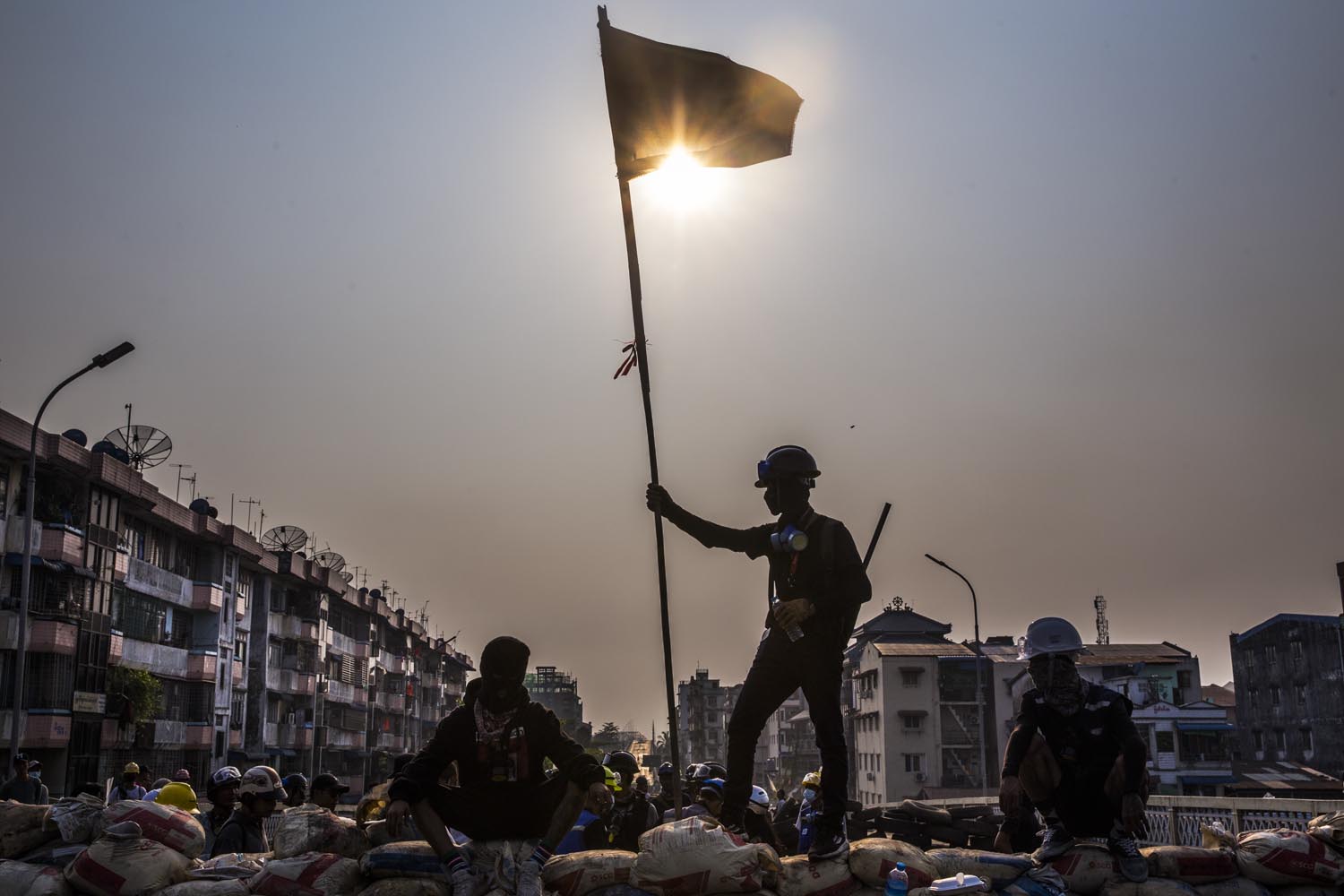
Protestors look on from their barricade at security forces on a bridge in Bayintnaung junction, a major hub across the river from Hlaingtharyar, Yangon, Myanmar. © Panos Pictures
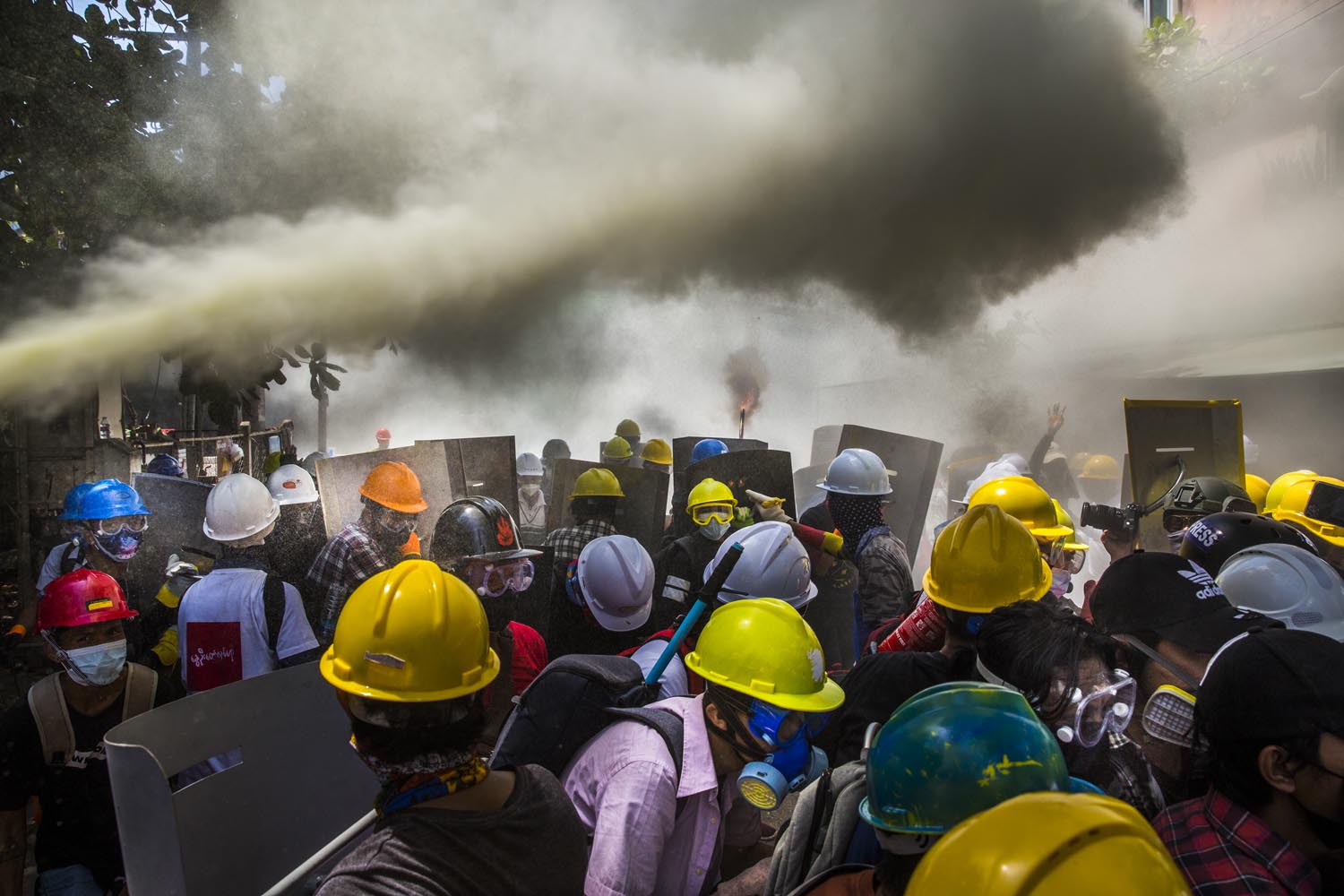
Young protestors use fire-extinguishers as police and military joint security forces use tear-gas, sound grenades and rubber bullets to crack down on the anti-coup demonstrations, Yangon, Myanmar. © Panos Pictures
Despite large numbers of casualties, small groups of protesters confronted heavily armed police and military units across Myanmar over the months following the coup.
Ethnic militias which have been fighting the central government continuously since independence in 1948 have reneged on shaky ceasefire agreed over the past decade and taken up arms again.
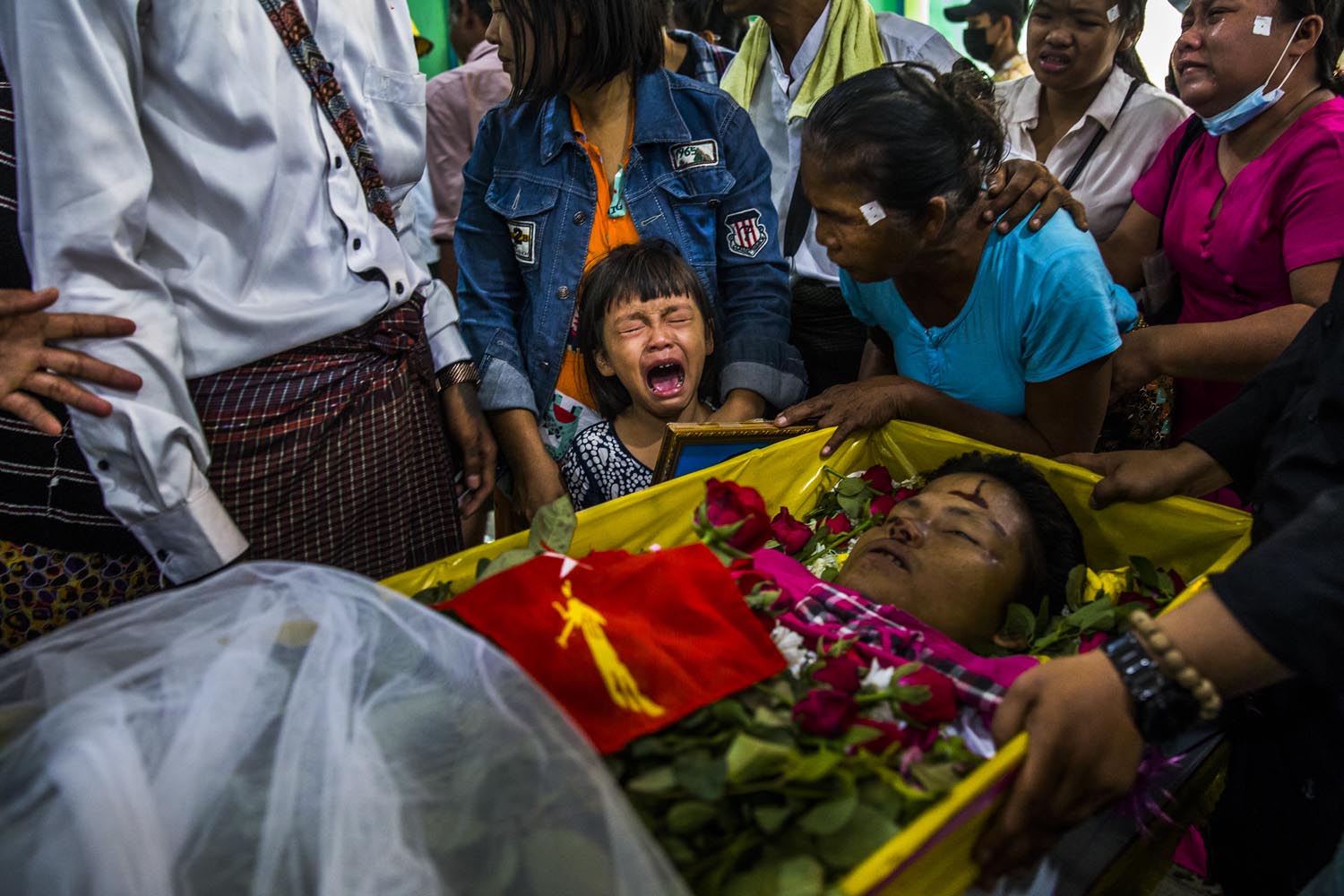
Shwe Yote Hlwar, 5 years old, cries as she looks at the dead body of her father Zwe Htet Soe, 26, a construction worker who was shot in the head during a protest in North Okkalapa township killing at least 6. Myanmar. © Panos Pictures
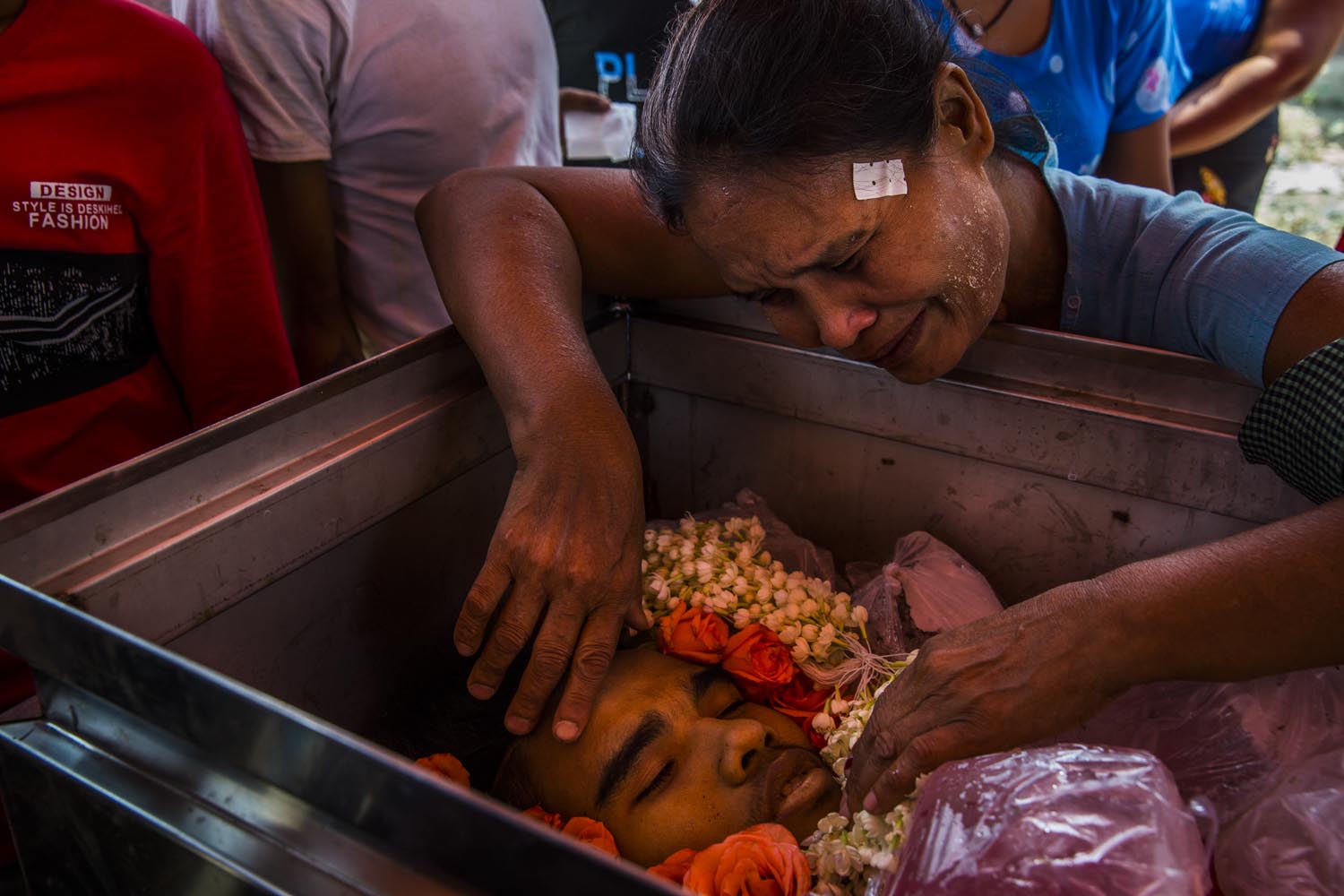
A mother mourns the dead body of Aung Zin Myint, 20, a student protestor who was shot in the chest and arm and died as the security forces fired on the protestors earlier in the morning in Dala, near Yangon, Myanmar. © Panos Pictures
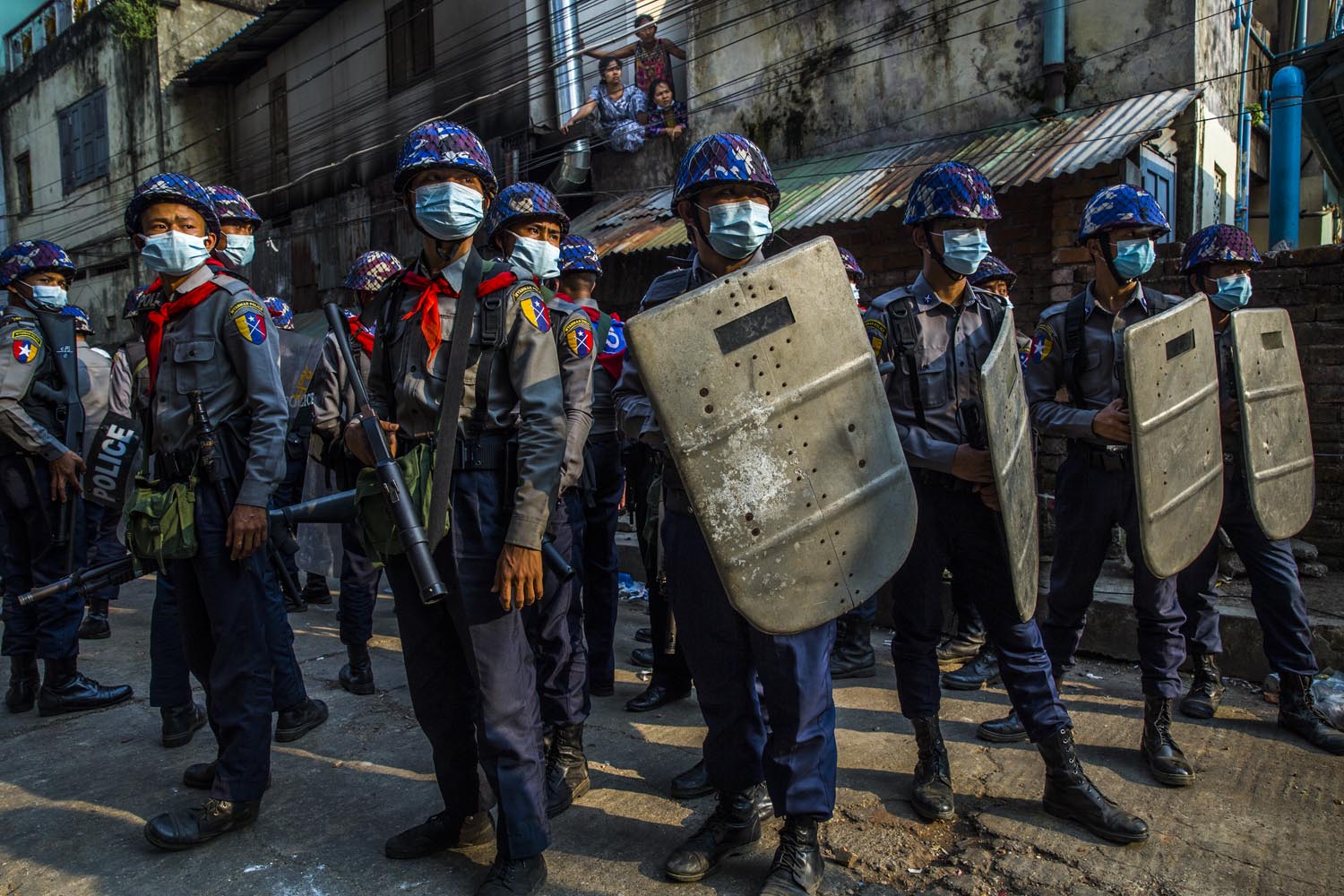
Police stand and watch as people clash with pro-military supporters who attacked people in the neighborhood with swords and sticks and injured at least four. Yangon, Myanmar. © Panos Pictures
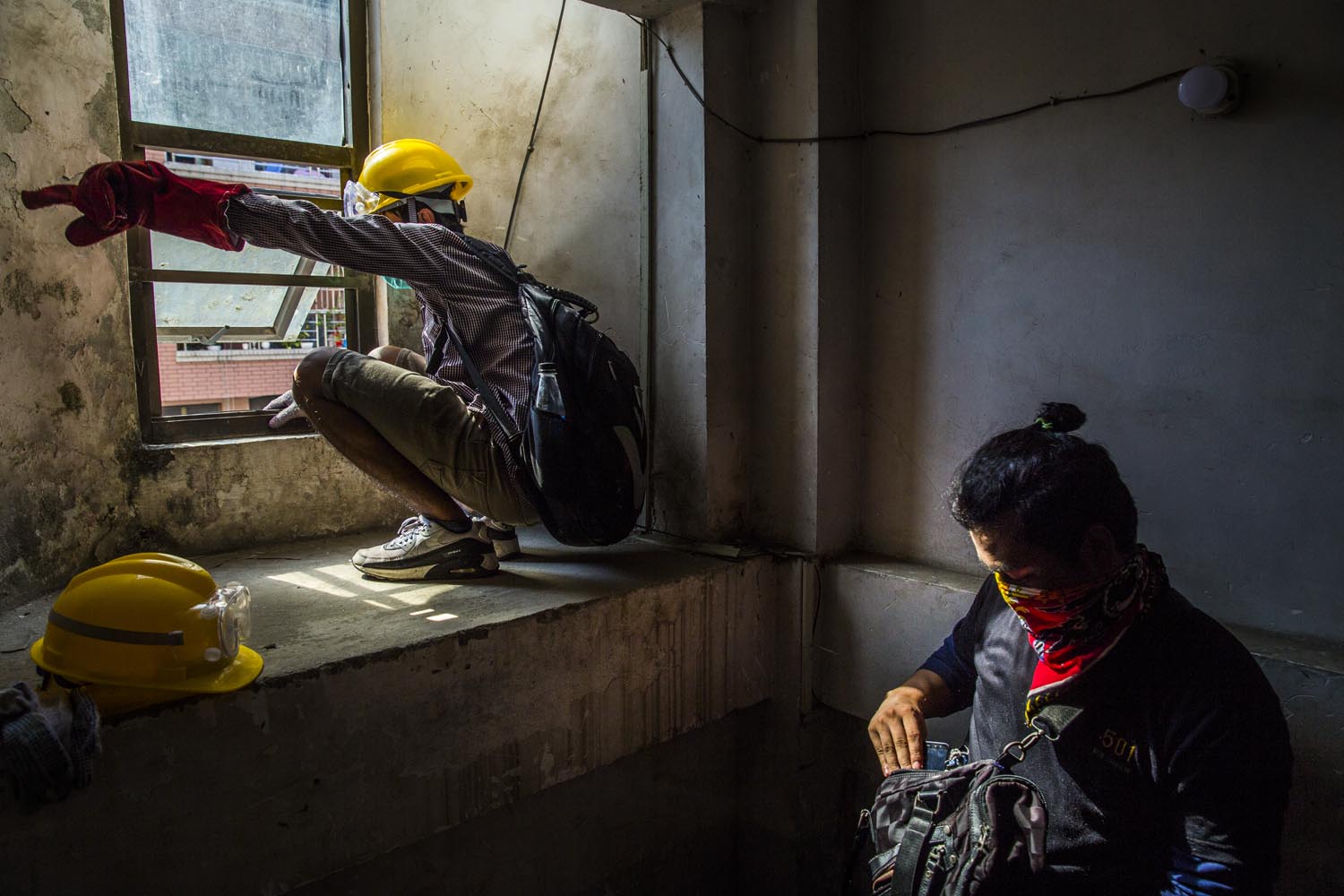
Protestors hide in an apartment stairway after police and military joint security forces cracked down on their anti-coup demonstration, Yangon, Myanmar. © Panos Pictures
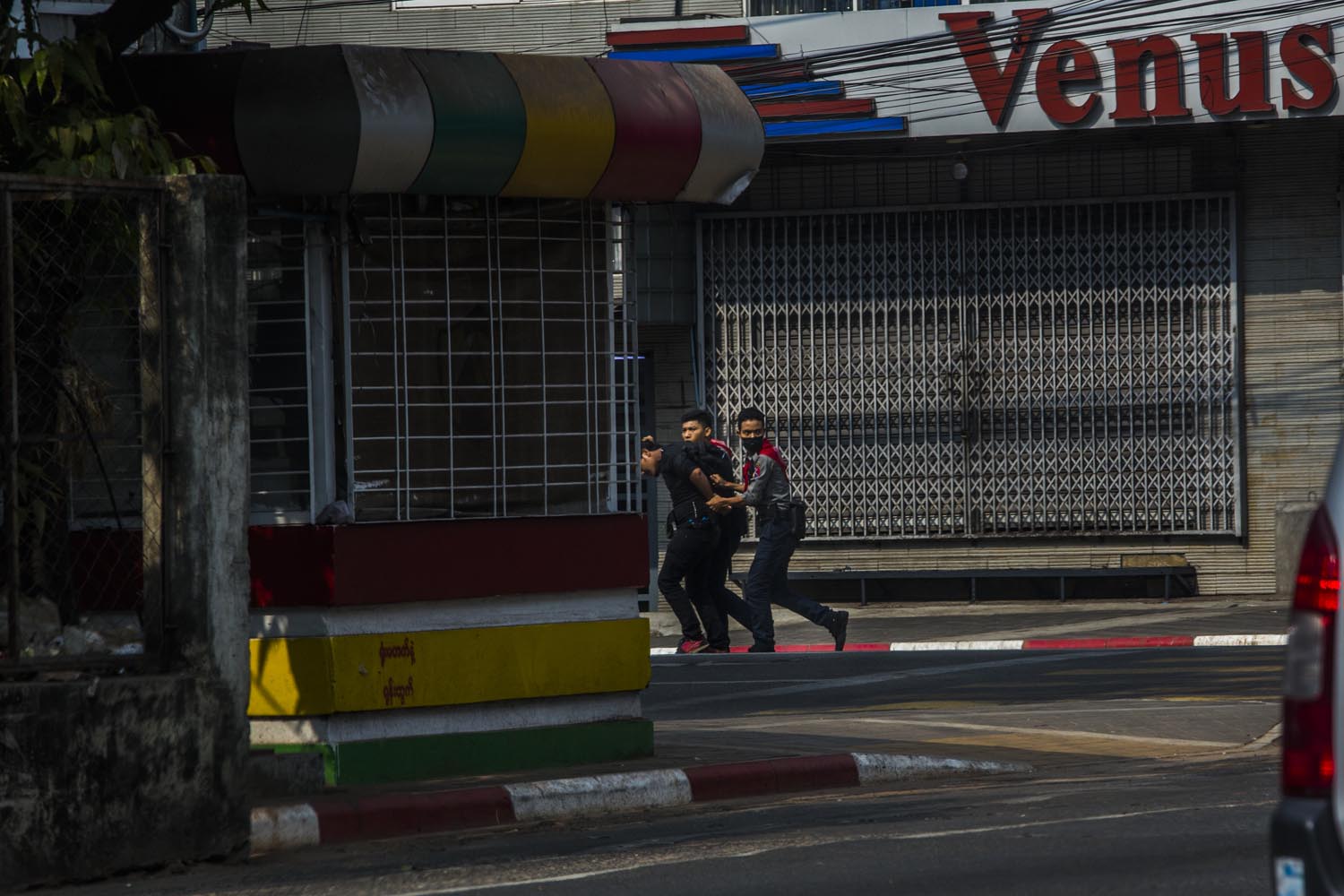
Police arrest a protestor in downtown Yangon, Myanmar. © Panos Pictures
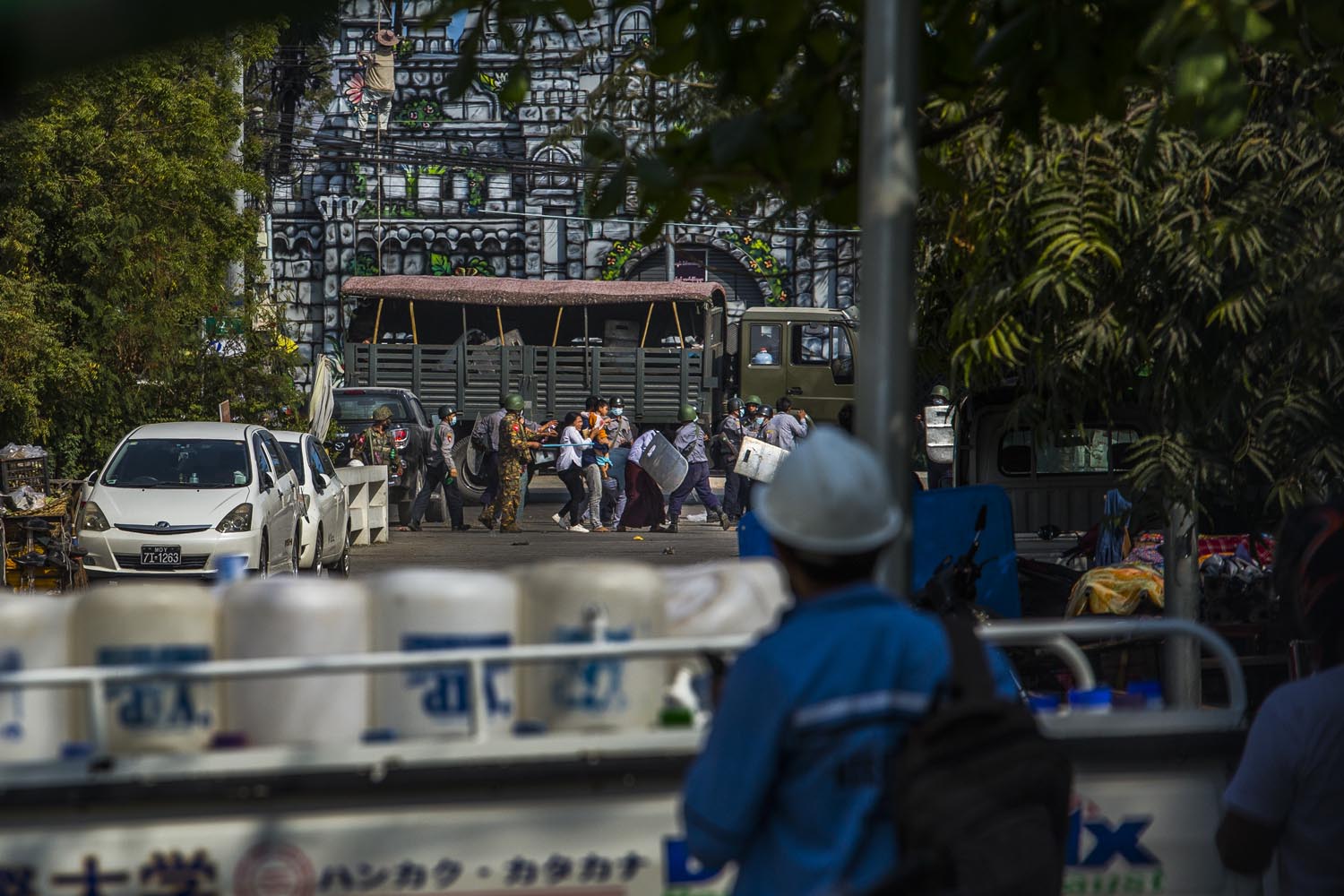
Military and police beat an arrested family after cracking down on a protest using gunfire, rubber-bullets, slingshots and beatings, Mandalay, Myanmar. © Panos Pictures
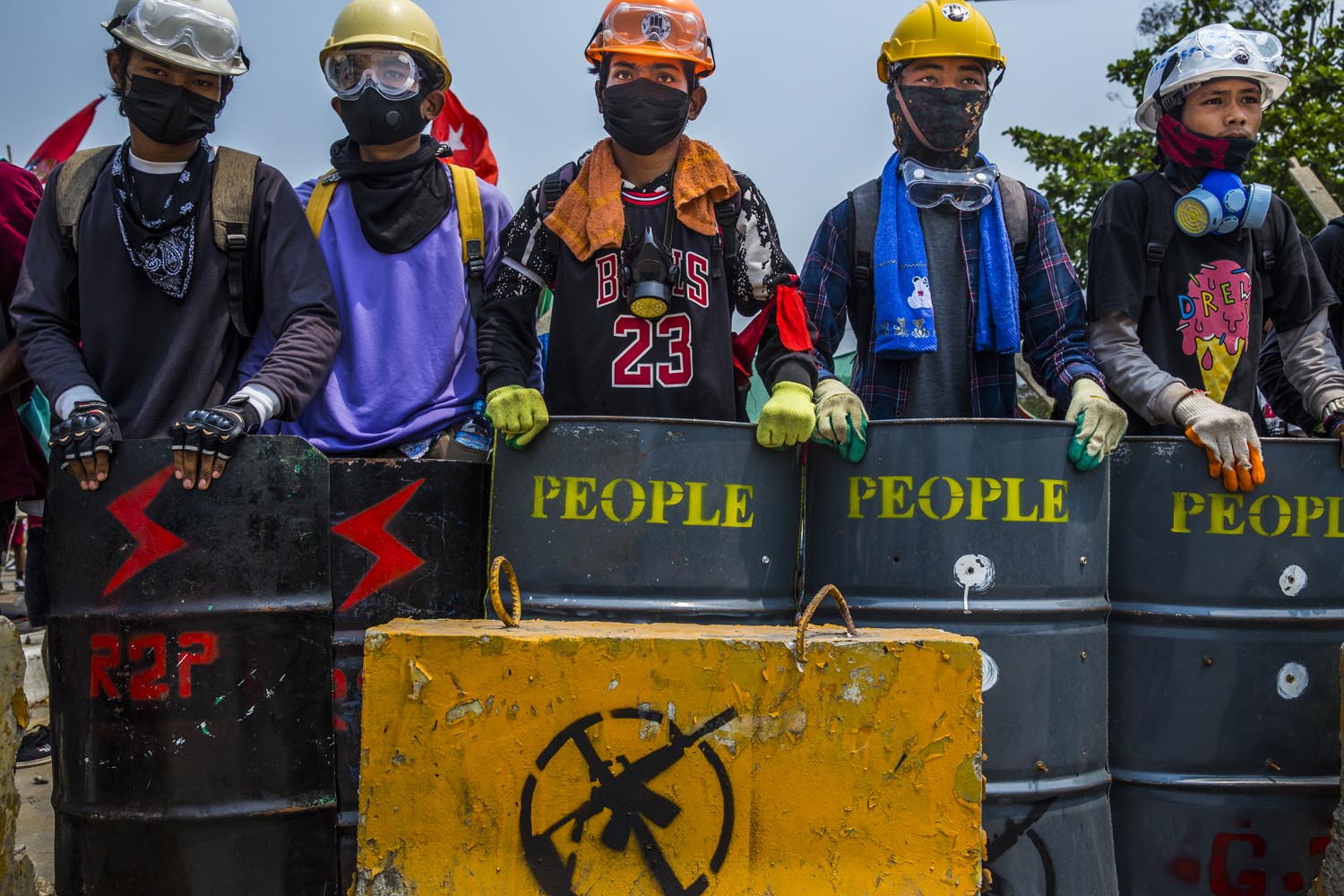
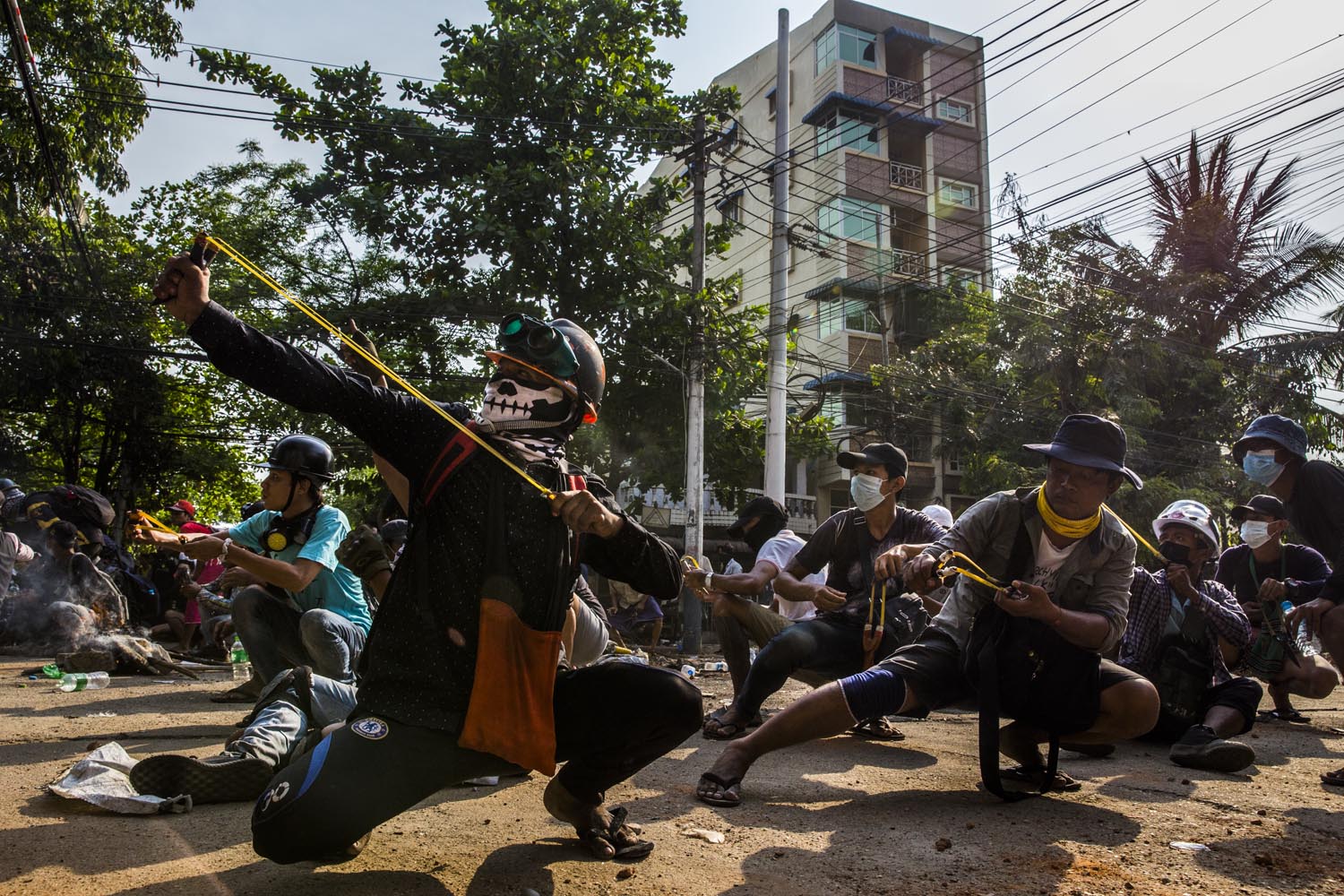
Protestors use homemade weapons such as airguns and slingshots to fend off security forces from coming into their neighborhood, in Tharketa township, Yangon, Myanmar. © Panos Picturees
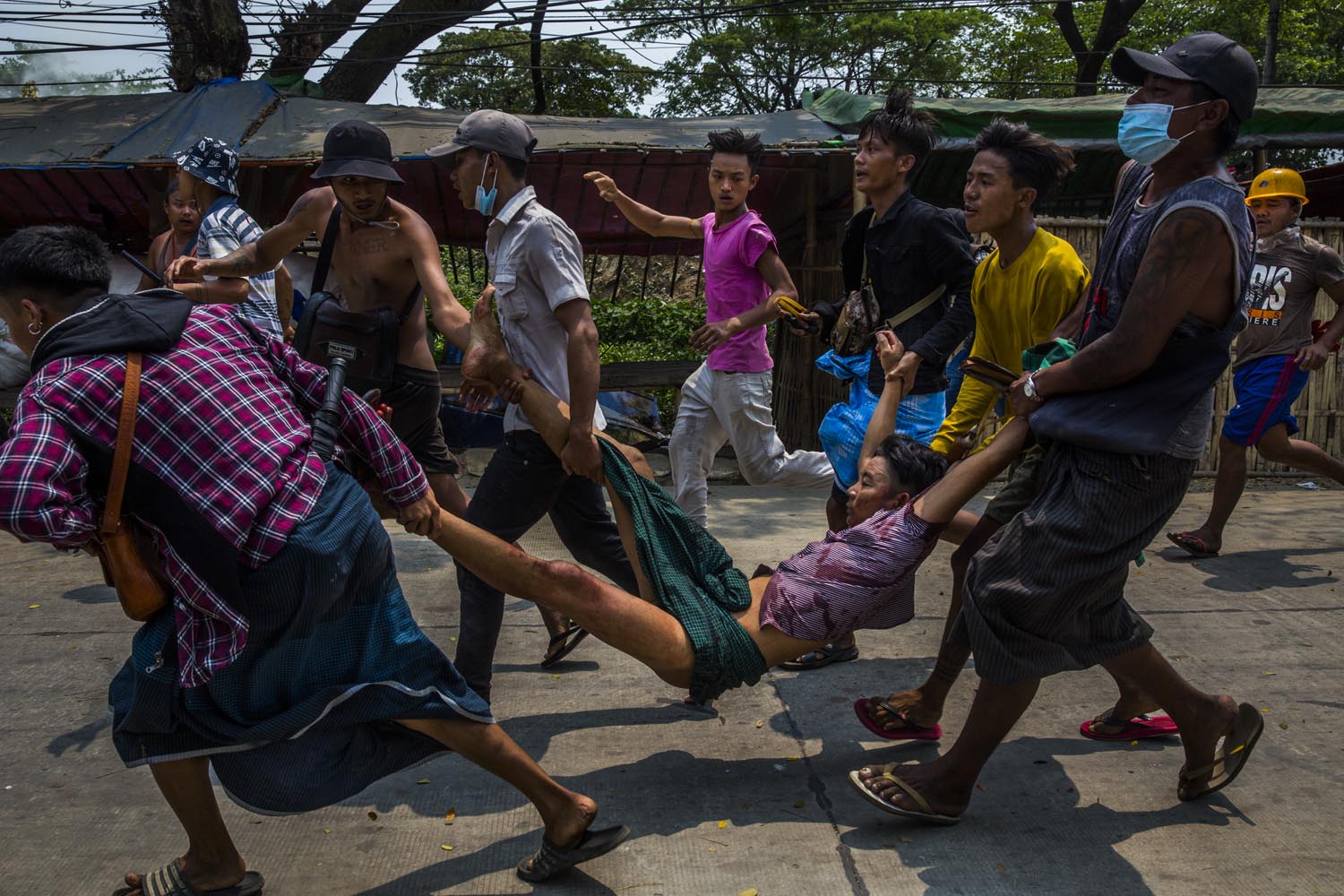
People carry a man with a gunshot wound as military and police joint security forces open fire on protestors during a crackdown in Hlaingtharyar industrial zone on the outskirts of Yangon, Myanmar. © Panos Pictures
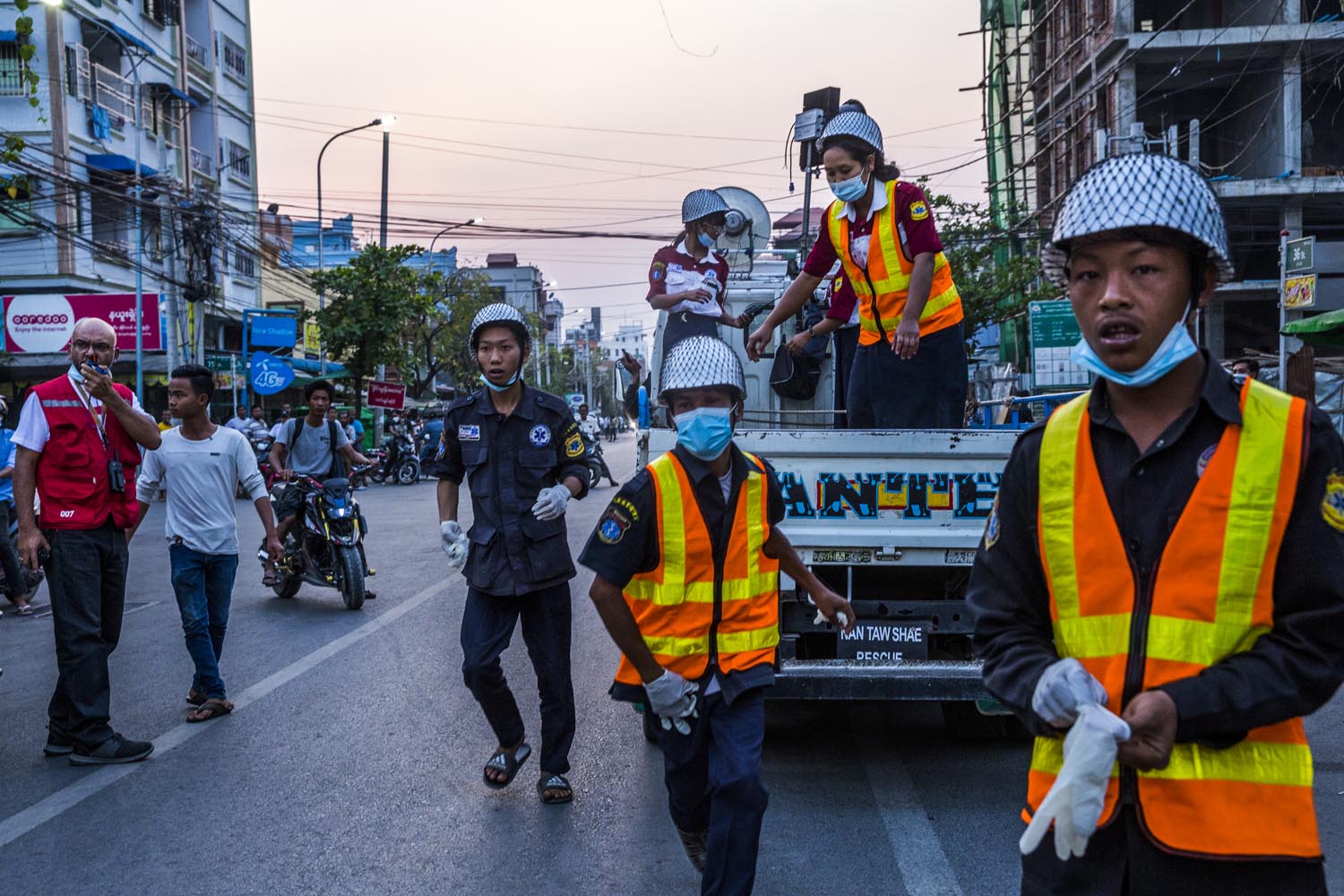
Volunteer medics arrive to rescue injured people shot by security forces trying to disperse a demonstration and road block in Mandalay, Myanmar. © Panos Pictures
In the cities, as demonstration have abated and the military has established a heavy security presence in towns and cities where demonstrations have been taking place, a low-level campaign of bombings and arson against government-owned and linked businesses and institutions has kept the country in a state of febrile tension.
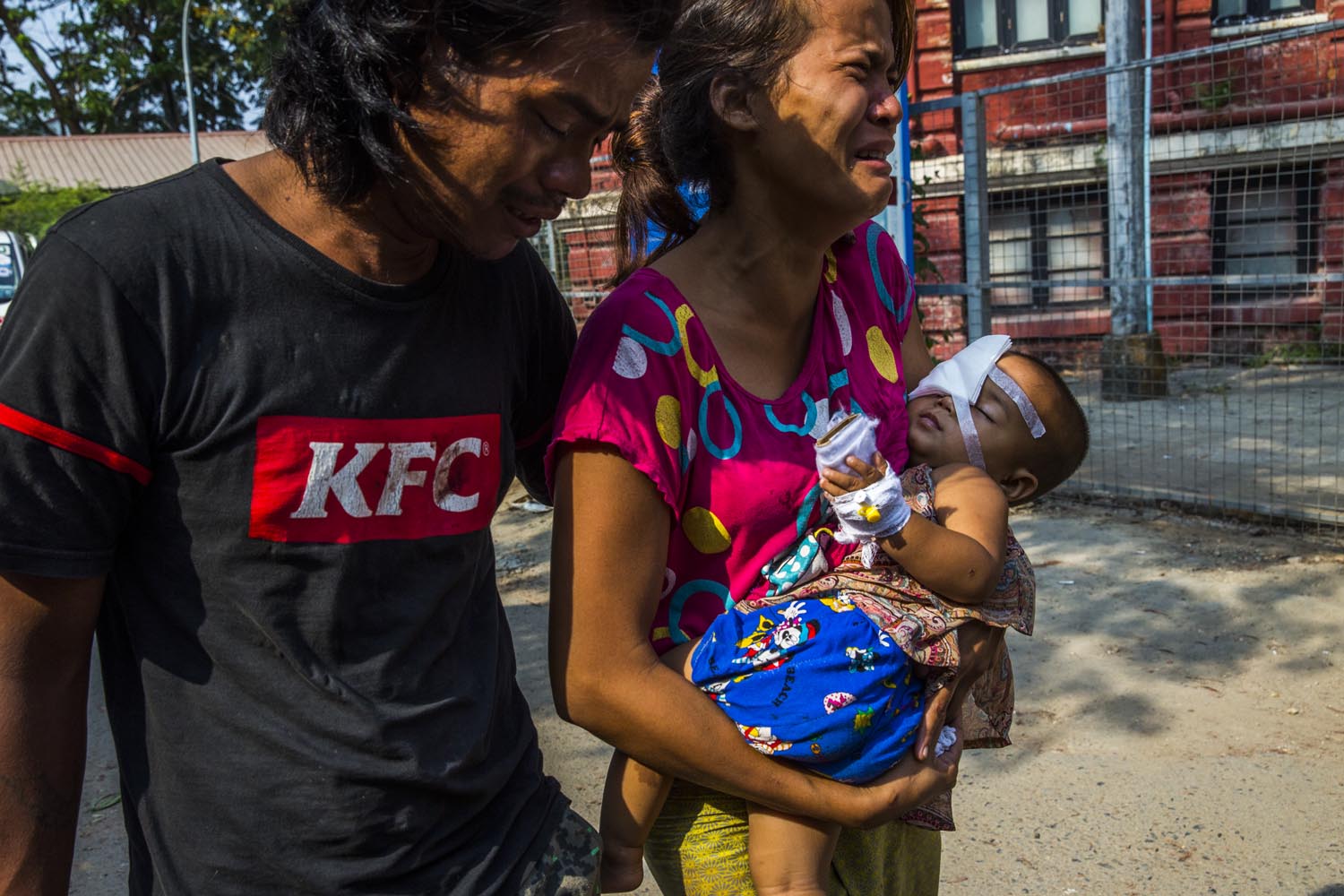
Father Nay Win Tun and mother Moe Moe Khine weep as they carry their 1-year-old daughter Thin Thawdaw Tun who was shot in the eye with a rubber bullet fired by the security forces, while the baby was inside their home in Yangon, Myanmar. © Panos Pictures
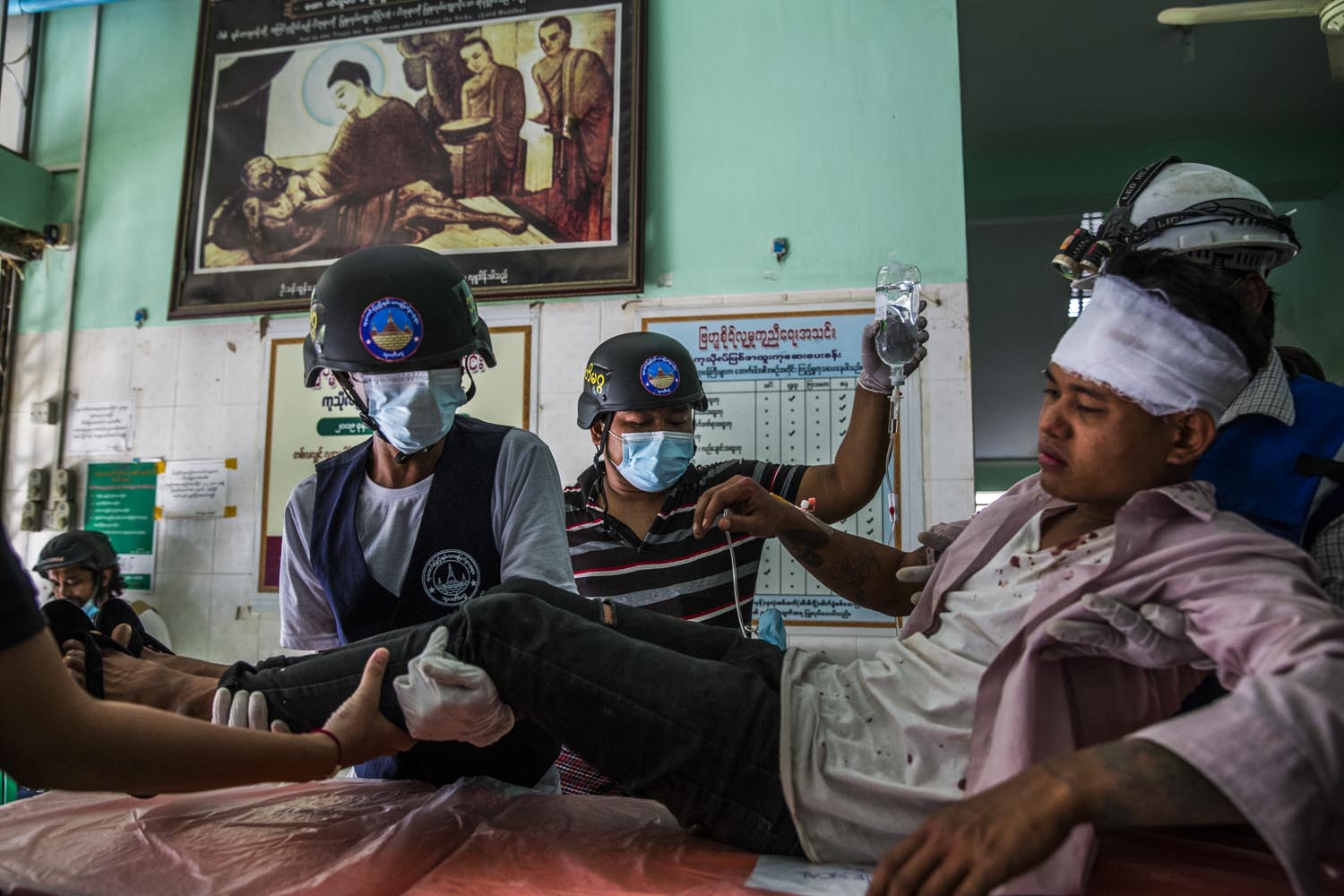
Thurein (21) was shot at least three times in the chest and the head with rubber bullets as military and police cracked down on a protest using gunfire, rubber-bullets, slingshots and beatings in Mandalay, Myanmar. © Panos Pictures
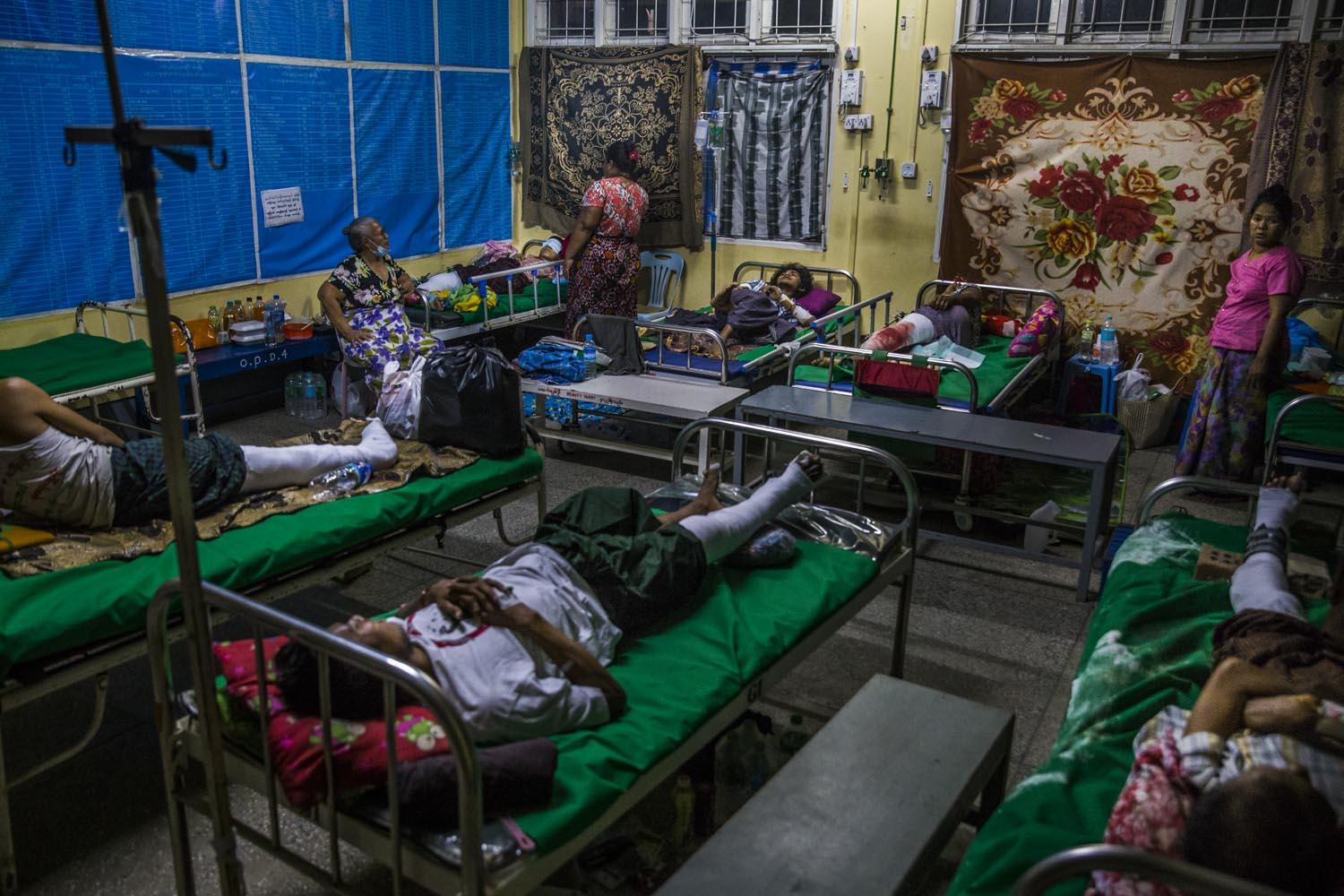
Patients and family members at a makeshift treatment ward for people with gunshot wounds at a hospital in Yangon where volunteer medical workers have been discreetly treating victims of the crackdowns by the security forces, Yangon, Myanmar. © Panos Pictures
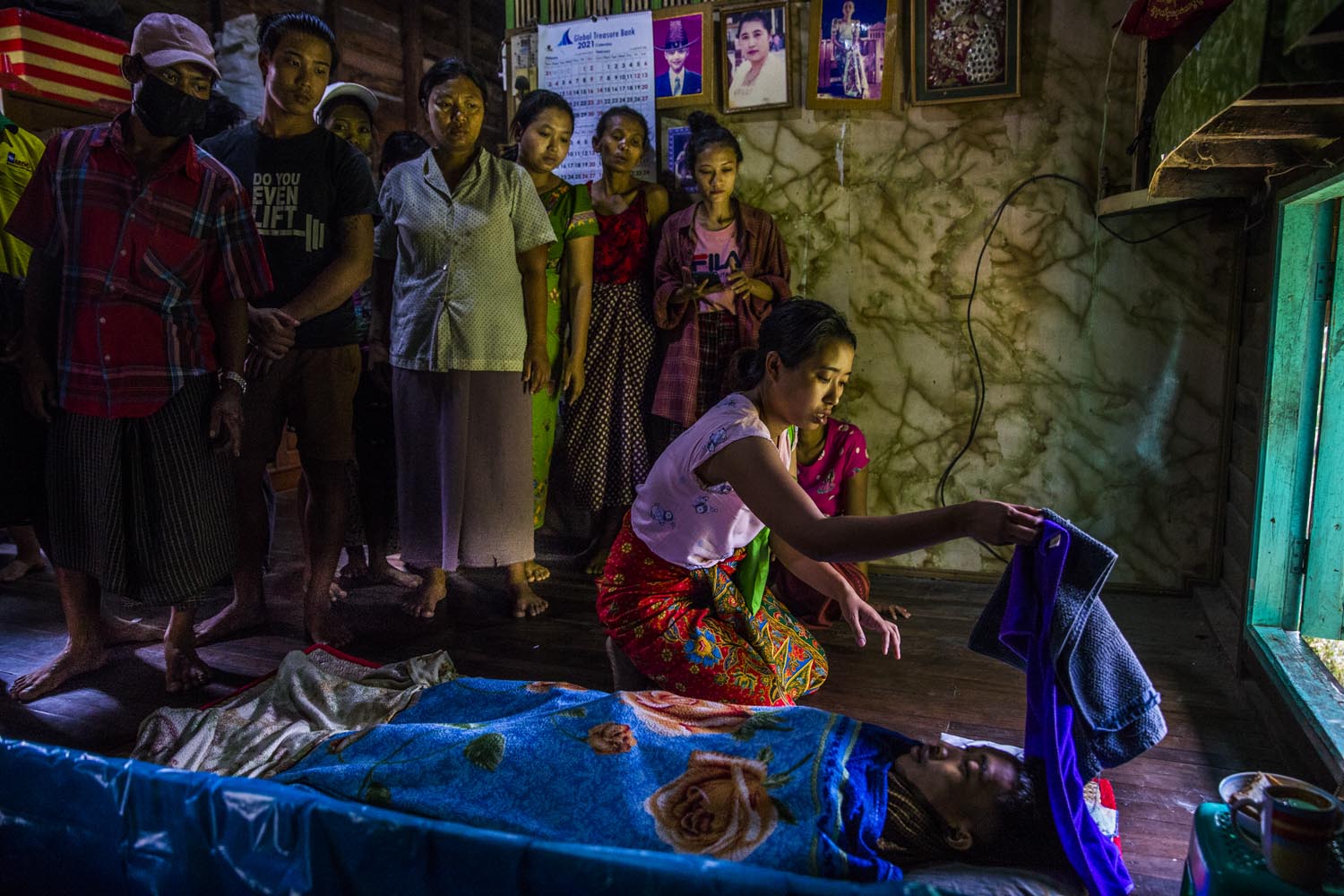
Family members and relatives sit beside the dead body of Kyaw Htet Aung, 19, a high school student who was shot in the neck while protesting in Dala, across the river from Yangon, Myanmar. © Panos Pictures
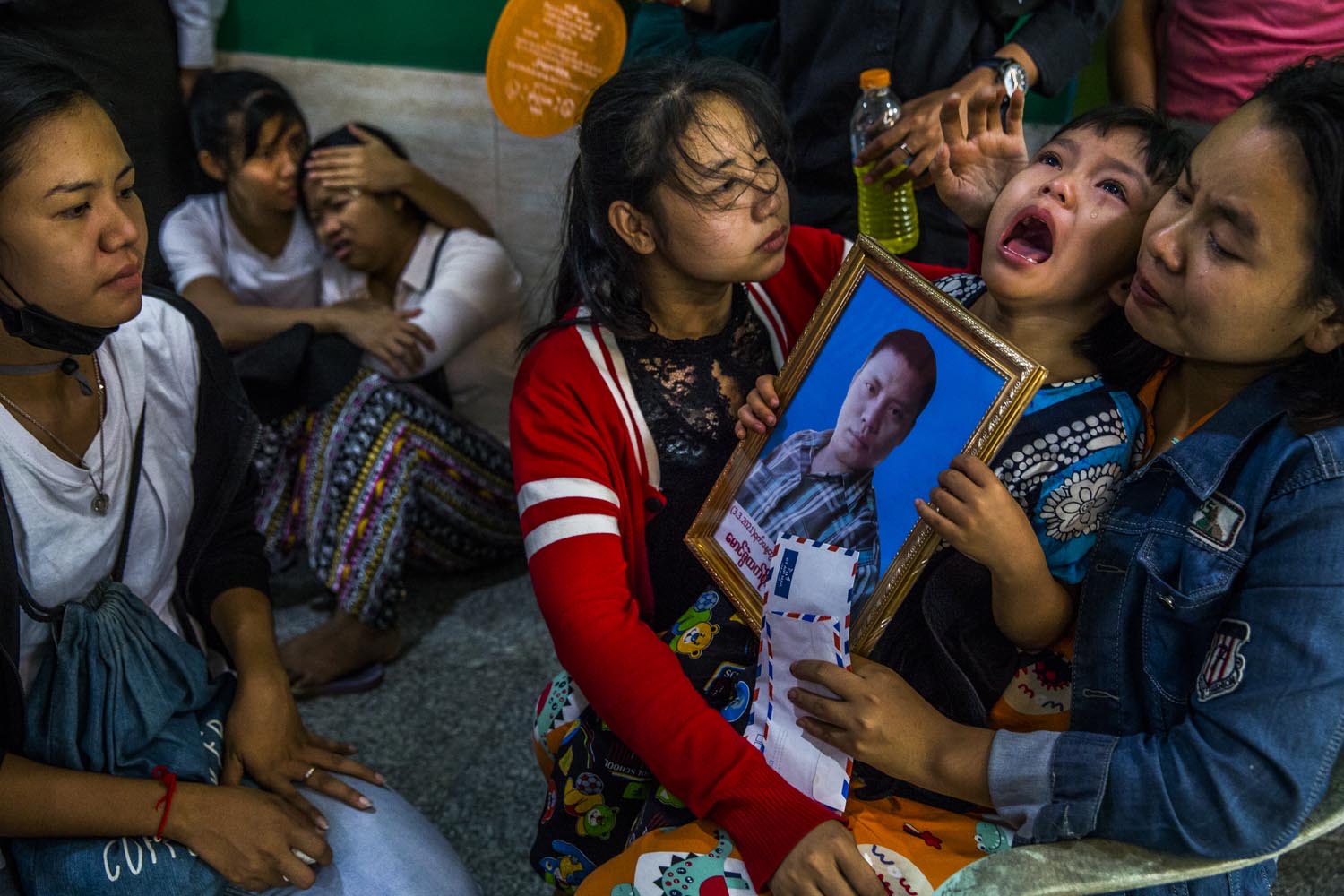
Shwe Yote Hlwar, 5yr, holds onto her mother Thet Htar and cries at the funeral of her father Zwe Htet Soe, 26, a construction worker who was shot in the head two days earlier when the military and police joint security forces cracked down on protestors in North Okkalapa township killing at least 6. Yangon, Myanmar. © Panos Pictures
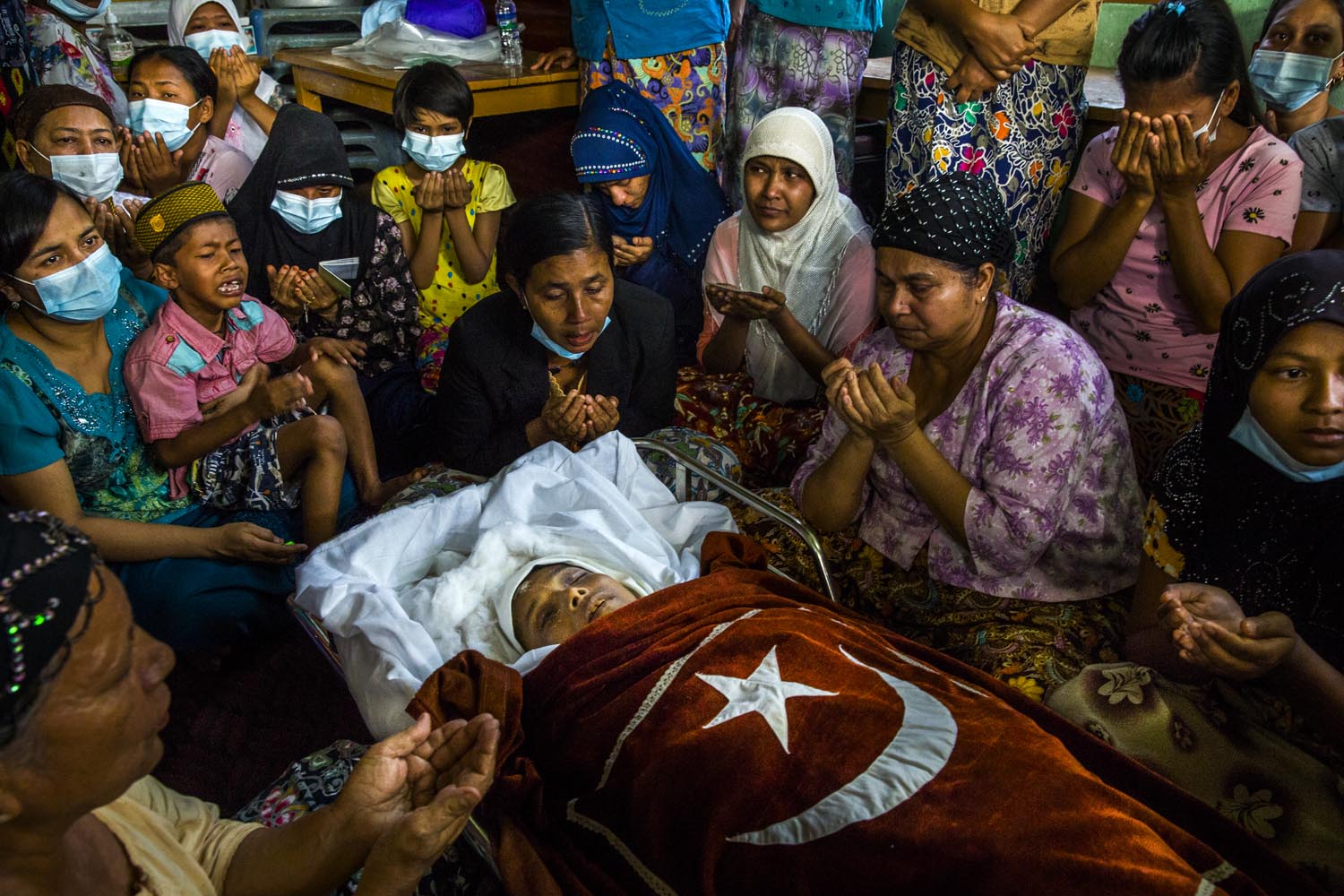
Family and relatives mourn the death of Daisy Kyaw Win, 32, who was shot in the head the day before as the security forces opened fire on the people blocking a road in Mandalay, Myanmar. © Panos Pictures
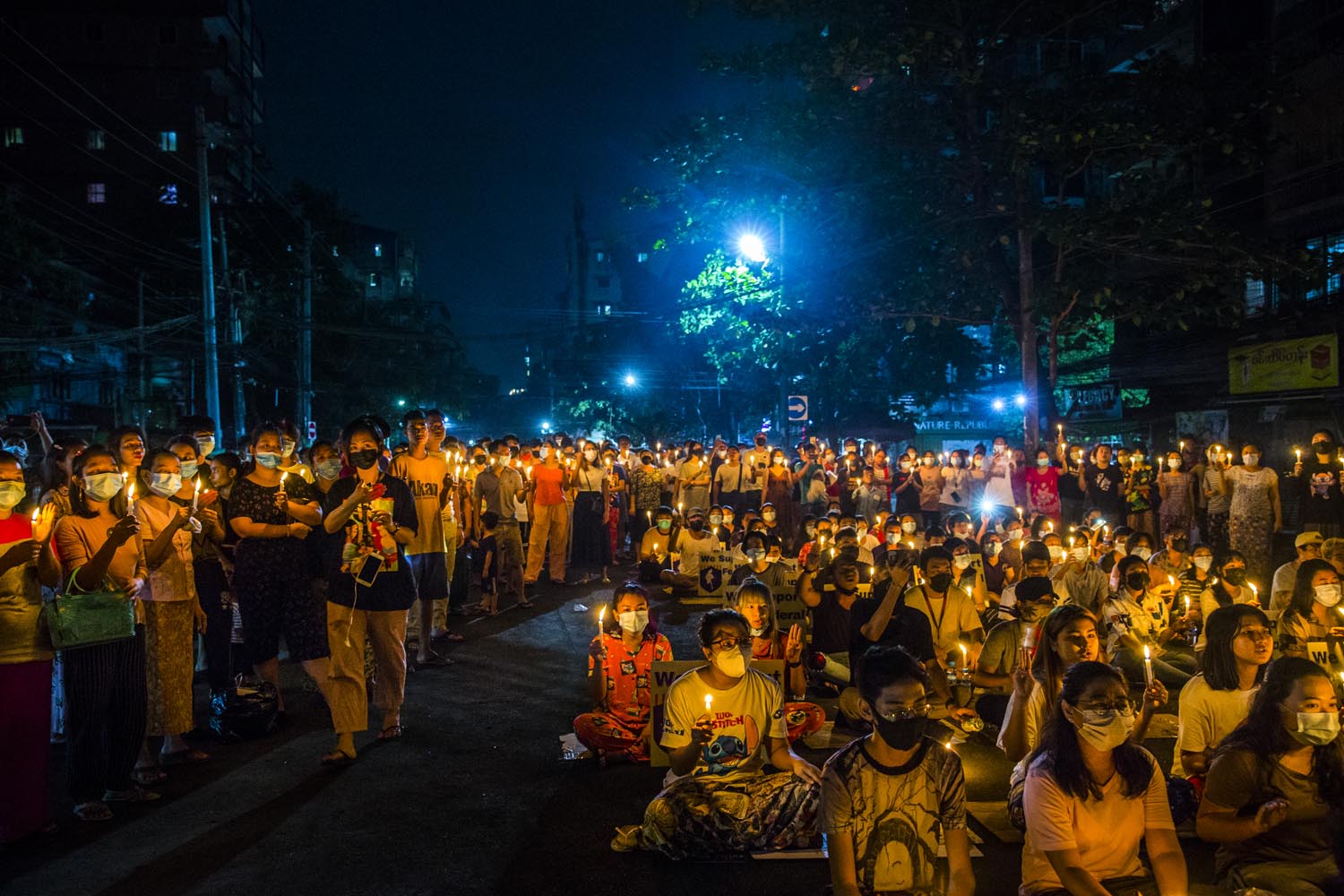
Despite crackdowns and arrests during the day, people hold candles and sing protest songs at dusk, in Tamwe township, Yangon, Myanmar. © Panos Pictures
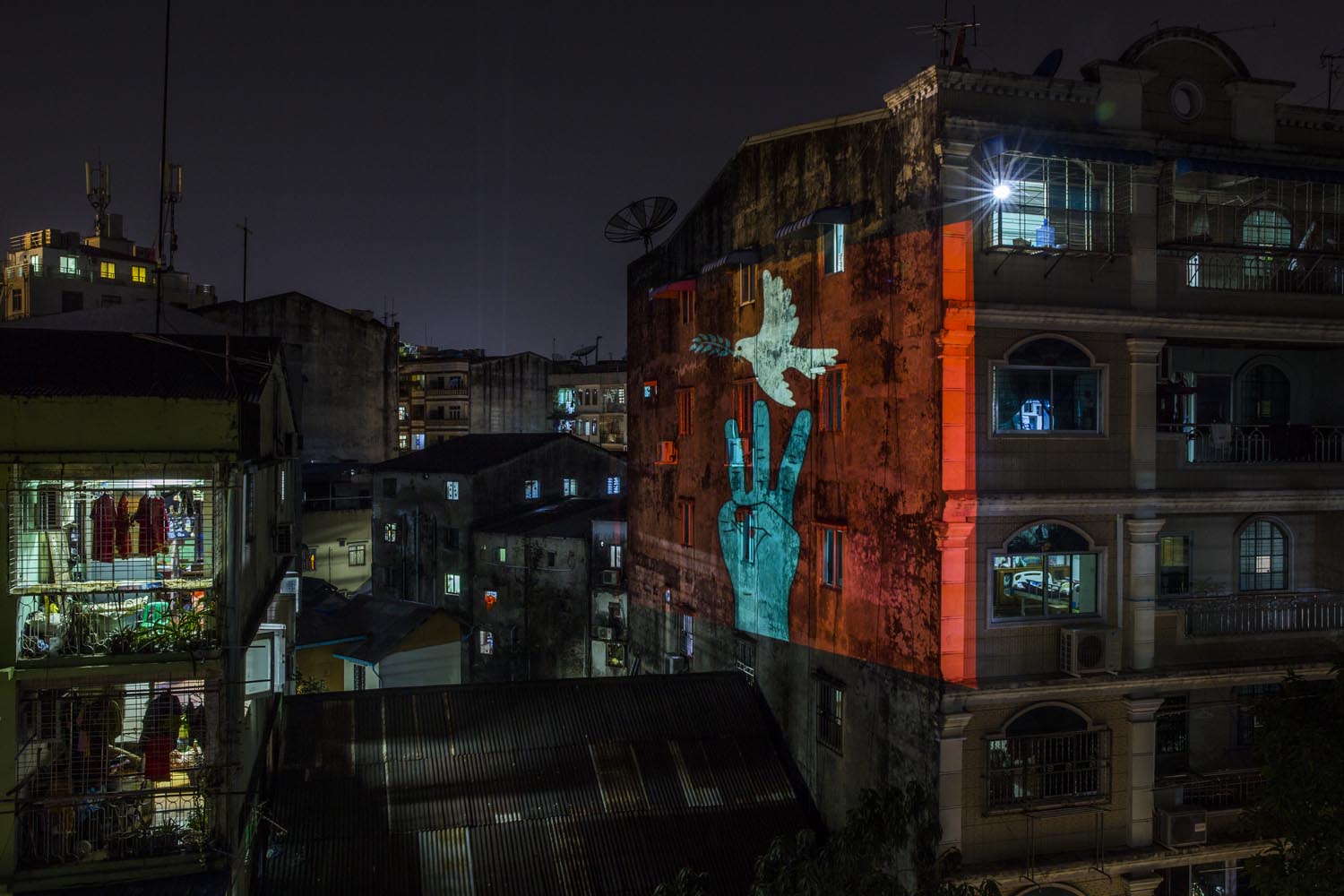
An artist uses an LED projector to project symbols of protest in support of the NLD and Aung San Suu Kyi in Yangon, Myanmar. © Panos Pictures
This body of work from Myanmar's violent return to military rule will be exhibited at the 2021 edition of Visa pour l'image, the international photojournalism festival in Perpignan, France, from 28 August to 26 September.
For more details, please click here.

